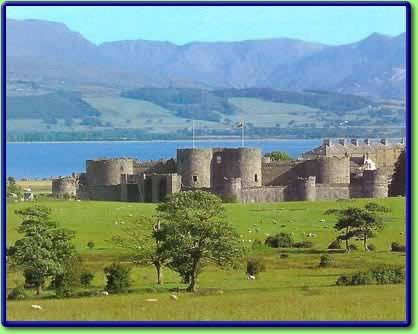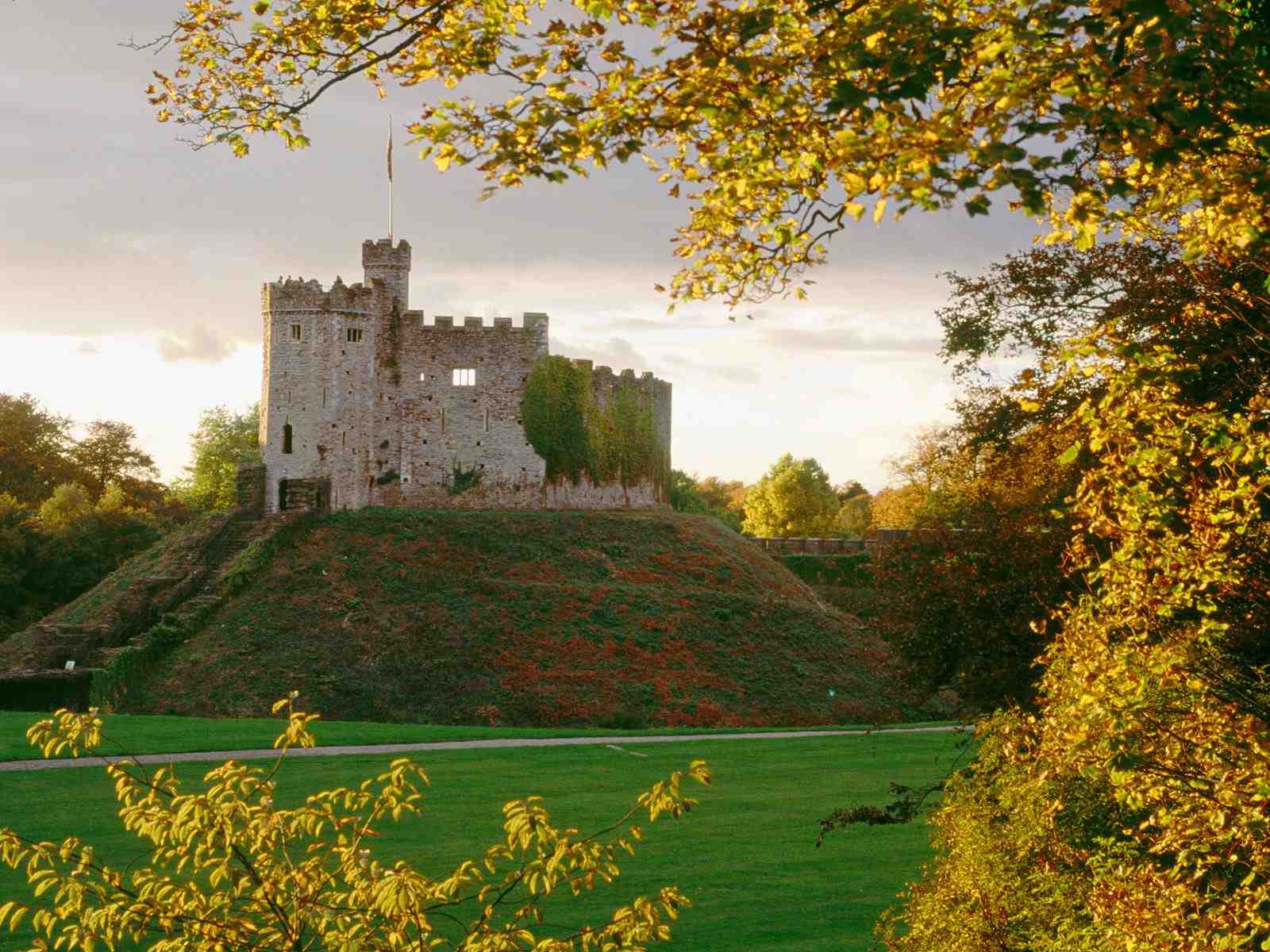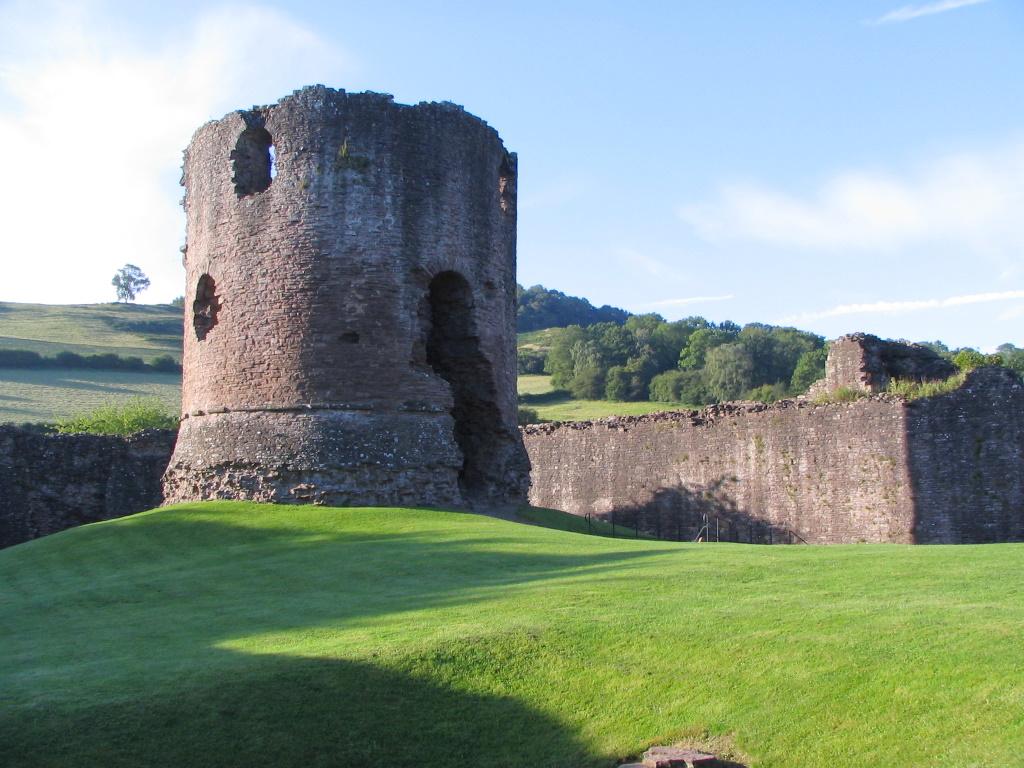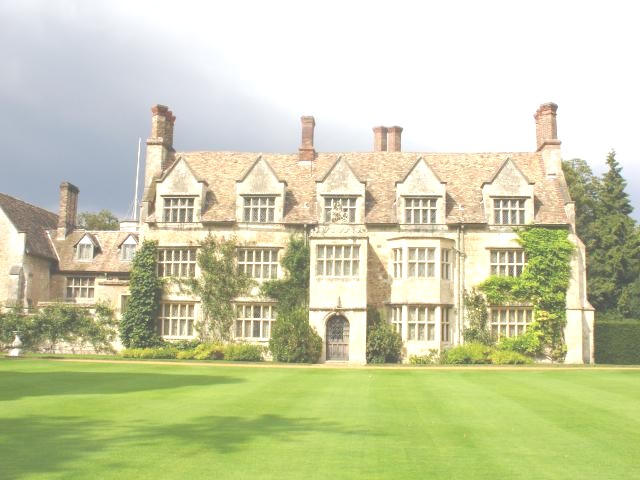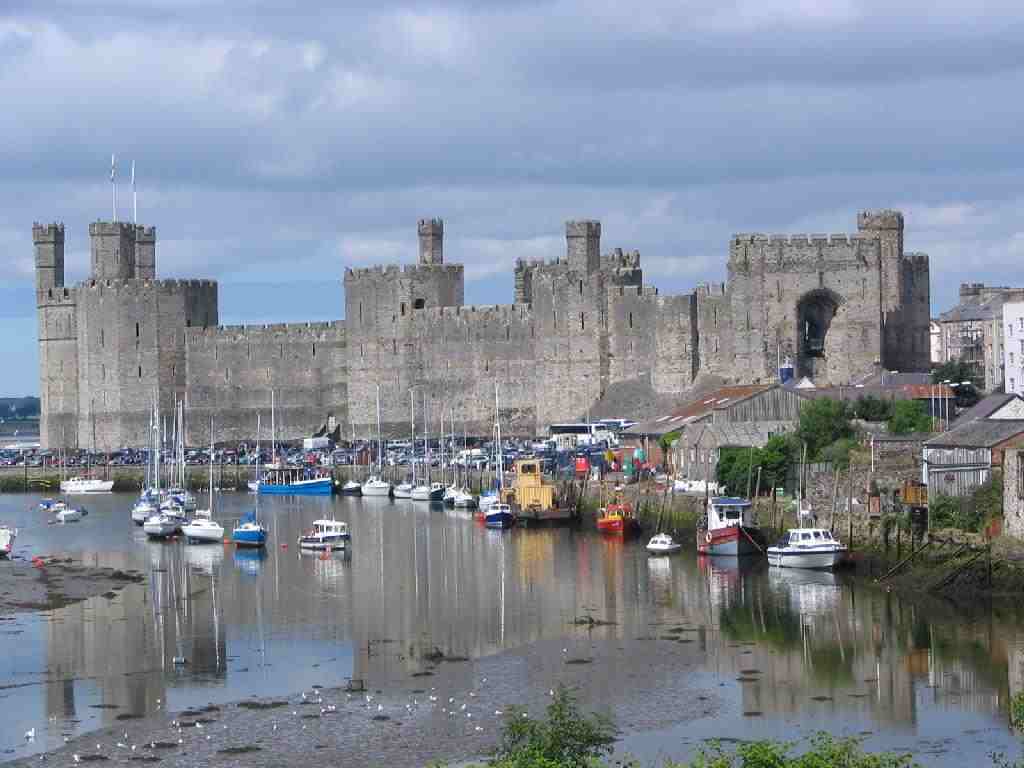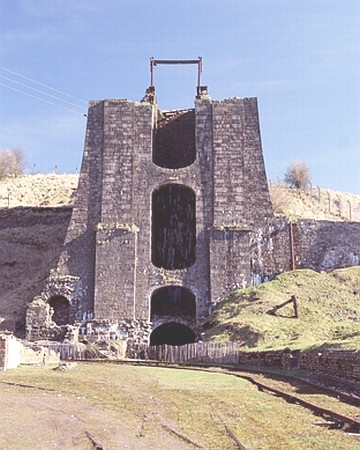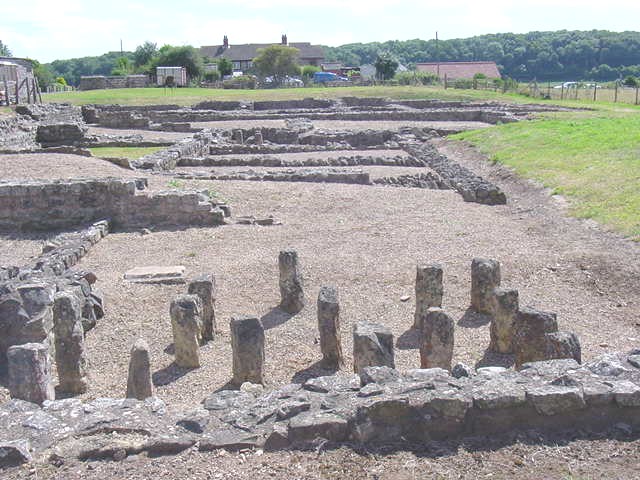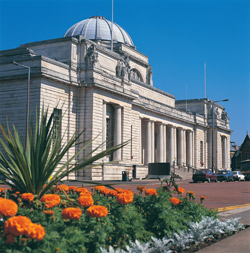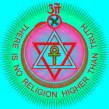
The Writings of Annie Besant
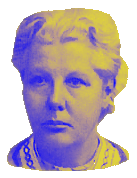
Annie
Besant
(1847
-1933)
.
Death and After ?
By
Annie Besant
PREFACE
This
book by Dr. Annie Besant has been through several Editions. The following
is
the Preface that appeared in the First Edition.
FEW
words are needed in sending this little book out into the world. It is the
third
of a series of Manuals designed to meet the public demand for a simple
exposition
of Theosophical teachings. Some have complained that our literature
is
at once too abstruse, too technical, and too expensive for the ordinary
reader,
and it is our hope that the present series may succeed in supplying what
is
a very real want. Theosophy is not only for the learned; it is for all.
Perhaps
among those who in these little books catch their first glimpse of its
teachings,
there may be a few who will be led by them to penetrate more deeply
into
its philosophy, its science, and its religion, facing its abstruser
problems
with the student's zeal and the neophyte's ardour. But these Manuals
are
not written for the eager student, whom no initial difficulties can daunt;
they
are [v] written for the busy men and women of the work-a-day world, and
seek
to make plain some of the great truths that render life easier to bear and
death
easier to face. Written by servants of the Masters who are the Elder
Brothers
of our race, they can have no other object than to serve our
fellow-men.
[vi]
CONTENTS
Views of
Death
The
Immortal and the Perishable
The Fate of
the Body
The Fate of
the Etheric Double
Kamaloka,
Desire-land, and the Fate of Passions and Desires
Kamaloka,
The Shells
Kamaloka,
The Elementaries
Devachan
The
Devachan
The Return
to Earth
Nirvana
Communications
between Earth and other Spheres
Appendix –
Suicides
DEATH — AND AFTER?
WHO
does not remember the story of the Christian missionary in Britain, sitting
one
evening in the vast hall of a Saxon king, surrounded by his thanes, having
come
thither to preach the gospel of his Master; and as he spoke of life and
death
and immortality, a bird flew in through an unglazed window, circled the
hall
in its flight, and flew out once more into the darkness of the night. The
Christian
priest bade the king see in the flight of the bird within the hall the
transitory
life of man, and claimed for his faith that it showed the soul, in
passing
from the hall of life, winging its way not into the darkness of night,
but
into the sunlit radiance of a more glorious world. Out of the darkness,
through
the open window of Birth, the life of a man comes to the earth; it
dwells
for a while before our eyes; into the darkness, through the open window
of
Death, it vanishes out of our sight. And man has questioned ever of Religion,
Whence
comes it? Whither goes it? and the answers have varied with the faiths.
Today,
many a hundred year since Paulinus talked with Edwin, there are
more
people in Christendom who question whether man has a spirit to come any
whence
or to go any whither than, perhaps, in the world’s history could ever
before
have been found at one time. And the very Christians who claim that
Death’s
terrors have been abolished, have surrounded the bier and the tomb with
more
gloom and more dismal funeral pomp than have the votaries of any other
creed.
What can be more depressing than the darkness in which a house is kept
shrouded,
while the dead body is awaiting sepulture? What more repellent than
the
sweeping robes of lusterless crape, and the purposed hideousness of the
heavy
cap in which the widow laments the “deliverance” of her husband “from the
burden of the flesh”? What more revolting
than the artificially long faces of
the
undertaker’s men, the drooping “weepers”, the carefully arranged white
handkerchiefs,
and, until lately, the pall-like funeral cloaks? During the last
few
years, a great and marked improvement has been made. The plumes, cloaks, and
weepers have well-nigh disappeared. The grotesquely ghastly hearse is almost a
thing of the past, and the coffin goes forth heaped over with flowers instead
of shrouded in the heavy black velvet pall.
Men
and women, though still wearing black, do not roll themselves up in shapeless
garments like sable winding-sheets, as if trying to see how miserable they
could make themselves by the imposition of artificial discomforts.
Welcome
common-sense has driven custom from its throne, and has refused any longer to
add these gratuitous annoyances to natural human grief.
In
literature and in art, alike, this gloomy fashion of regarding Death has been
characteristic
of Christianity. Death has been painted as a skeleton grasping a
scythe,
a grinning skull, a threatening figure with terrible face and uplifted
dart,
a bony scarecrow shaking an hourglass – all that could alarm and repel has
been
gathered round this rightly-named King of Terrors. Milton, who has done so much
with his stately rhythm to mould the popular conceptions of modern
Christianity,
has used all the sinewy strength of his magnificent diction to
surround
with horror the figure of Death.
The other
shape,
If shape it
might be called, that shape had none
Distinguishable
in member, joint, or limb,
Or
substance might be called that shadow seemed,
For each
seemed either; black it stood as night,
Fierce as
ten furies, terrible as hell,
And shook a
dreadful dart; what seemed his head
The
likeness of a kingly crown had on.
Satan was
now at hand, and from his seat
The monster
moving onward came as fast,
With horrid
strides; hell trembled as he strode …
… So spoke
the grisly terror; and in shape
So
speaking, and so threatening, grew tenfold
More
dreadful and deform …
… but he, my
inbred enemy,
Forth
issued, brandishing his fatal dart,
Made to
destroy: I fled, and cried out Death!
Hell
trembled at the hideous name, and sighed
From all
her caves, and back resounded Death.*
[* Book
ii., from lines 666-789. The whole passage bristles with horrors.]
That
such a view of Death should be taken by the professed followers of a
Teacher
said to have “brought life and immortality to light” is passing strange.
The
claim, that as late in the history of the world as a mere eighteen centuries
ago
the immortality of the Spirit in man was brought to light, is of course
transparently
absurd, in the face of the overwhelming evidence to the contrary
available
on all hands. The stately Egyptian Ritual with its Book of the Dead,
in
which are traced the post-mortem journeys of the Soul, should be enough, if
it
stood alone, to put out of court for ever so preposterous a claim. Hear the
cry
of the Soul of the righteous:
O
ye, who make the escort of the God, stretch out to me your arms, for I become
one of you (xvii. 22).
Hail
to thee, Osiris, Lord of Light, dwelling in the mighty abode, in the bosom
of
the absolute darkness. I come to thee, a purified Soul; my two hands are
around
thee (xxi. 1).
I
open heaven; I do what was commanded in Memphis. I have knowledge of my heart;
I am in possession of my heart, I am in possession of my arms, [4] I am in
possession of my legs, at the will of myself. My Soul is not imprisoned in my
body
at the gates of Amenti (xxvi. 5, 6).
Not
to multiply to weariness quotations from a book that is wholly composed of
the
doings and sayings of the disembodied man, let it suffice to give the final
judgment
on the victorious Soul:
The
defunct shall be deified among the Gods in the lower divine region, he shall
never
be rejected. … He shall drink from the current of the celestial river. …
His
Soul shall not be imprisoned, since it is a Soul that brings salvation to
those
near it. The worms shall not devour it (clxiv. 14-16).
The
general belief in Reincarnation is enough to prove that the religions of
which
it formed a central doctrine believed in the survival of the Soul after
Death;
but one may quote as an example a passage from the Ordinances of Manu,
following on a disquisition on metempsychosis, and answering the question of
deliverance from rebirths.
Amid
all these holy acts, the knowledge of self (should be translated, knowledge
of
the Self, Atma) is said (to be) the highest; this indeed is the foremost of
all
sciences, since from it immortality is obtained.* [* xii. 85. Trans. of
Burnell
and Hopkins.]
The
testimony of the great Zarathustrean Religion is clear, as is shown by the
following,
translated from the Avesta, in which, the journey of the Soul after
death
having been described, the ancient Scripture proceeds:
The
soul of the pure man goes the first step and arrives at (the Paradise)
Humata;
the soul of the pure man takes the second step and arrives at (the
Paradise)
Hukhta; it goes the third step and arrives at (the Paradise) Hvarst;
the
soul of the pure man takes the fourth step and arrives at the Eternal
Lights.
To
it speaks a pure one deceased before, asking it: How art thou, O pure
deceased,
come away from the fleshly dwellings, from the earthly possessions,
from
the corporeal world hither to the invisible, from the perishable world
hither
to the imperishable, as it happened to thee – to whom hail!
Then
speaks Ahura-Mazda: Ask not him whom thou asketh, (for) he is come on the
fearful, terrible, trembling way, the separation of body and soul.* [* From the
translation of Dhunjeebhoy Jamsetjee Medhora, Zoroastrian and some other
Ancient Systems, xxvii.]
The
Persian Desatir speaks with equal definiteness. This work consists of
fifteen
books, written by Persian prophets, and was written originally in the
Avestaic
language; “God” is Ahura-Mazda, or Yazdan:
God
selected man from animals to confer on him the soul, which is a substance
free,
simple, immaterial, non-compounded and nonappetitive. And that becomes an
angel by improvement.
By
his profound wisdom and most sublime intelligence, he connected the soul with
the material body.
If
he (man) does good in the material body, and has a good knowledge and
religion
he is Hartasp. …
As
soon as he leaves this material body, I (God) take him up to the world of
angels,
that he may have an interview with the angels, and behold me.
As
if he is not Hartasp, but has wisdom and abstains from vice, I will promote
him
to the rank of angels.
Every
person in proportion to his wisdom and piety will find a place in the rank
of
wise men, among the heavens and stars. And in that region of happiness he
will
remain for ever.* [* Trans. by Mirza Mohamed Hadi, The Platonist, 306.]
In
China, the immemorial custom of worshipping the Souls of ancestors shows how
completely the life of man was regarded as extending beyond the tomb. The Shu
King – placed by Mr. James Legge as the most ancient of Chinese classics,
containing historical documents ranging from B. C. 2357-627 – is full of
allusions to these Souls, who with other spiritual beings, watch over the
affairs of their descendants and the welfare of the kingdom. Thus Pan-kang,
ruling
from B.C. 1401-1374, exhorts his subjects:
My
object is to support and nourish you all. I think of my ancestors (who are
now)
the spiritual sovereigns. … Were I to err in my government, and remain long
here, my high sovereign (the founder of our dynasty) would send down on me
great punishment for my crime, and say, “Why do you oppress my people?”
If
you, the myriads of the people, do not attend to the perpetuation of your
lives, and cherish one mind with me, the One man, in my plans, the former kings
will send down on you great punishment for your crime, and say, “Why do you not
agree with our young grandson, but go on to forfeit your virtue?” When they
punish you from above, you will have no way of escape. … Your ancestors and
fathers will (now) cut you off and abandon you, and not save you from death.*
[* The Sacred Books of the East, iii. 109, 110.]
Indeed,
so practical is this Chinese belief, held today as in those long-past
ages,
that “the change that men call Death” seems to play a very small part
in
the thoughts and lives of the people of the Flowery Land.
These
quotations, which might be multiplied a hundred-fold, may suffice to prove the
folly of the idea that immortality came to “light through the Gospel”. The
whole ancient world basked in the full sunshine of belief in the immortality of
man, lived in it daily, voiced it in its literature, went with it in calm
serenity
through the gate of Death.
It
remains a problem why Christianity, which vigorously and joyously re-affirmed
it, should have growing in its midst the unique terror of Death that has played
so large a part in its social life, its literature, and its art. It is not
simply
the belief in hell that has surrounded the grave with horror, for other
Religions
have had their hells, and yet their followers have not been harassed
by
this shadowy Fear. The Chinese, for instance, who take Death as such a light
and
trivial thing, have a collection of hells quite unique in their varied
unpleasantness.
Maybe the difference is a question of race rather than of creed;
that
the vigorous life of the West shrinks from its antithesis, and that its
unimaginative
common-sense finds a bodiless condition too lacking in solidity of
comfort;
whereas the more dreamy, mystical East, prone to meditation, and ever
seeking
to escape from the thralldom of the senses during earthly life,
looks
on the disembodied state as eminently desirable, and as most conducive to
unfettered thought.
Ere
passing to the consideration of the history of man in the post-mortem state,
it
is necessary, however briefly, to state the constitution of man, as viewed by
the
Esoteric Philosophy, for we must have in mind the constituents of his being
ere
we can understand their disintegration.
Man then consists of
The Immortal Triad: the Individual. Atma,
or Spirit as Will.
Buddhi, or Spirit as Intuition.
Manas, or Spirit as Intellect.
The Perishable Quaternary: the
Person.Lower Manas, or Mind.
Kama, or Desire.
Prana, as Energising Vitality.
Prana, as Automatic Vitality.
If
we consider the bodies of man, the dense body is the visible, tangible outer
form,
composed of various tissues. The etheric double is the ethereal
counterpart
of the body, composed of the physical ethers. Prana is vitality, the
integrating
energy that co-ordinates the [9] physical molecules and holds them
together
in a definite organism; it is the life-breath within the organism, the
portion
of the universal Life-Breath, appropriated by the organism during the
span
of existence that we speak of as “a life”, and appears in two forms in the
dense
and etheric parts of the physical body. Kama is the aggregate of
appetites,
passions, and emotions, common to man and brute, the emotions
evolving
to a higher point in man under the play of the lower mind. Manas is the
Thinker
in us, the Intellect. Buddhi is the aspect of the Spirit, which
manifests
above the Intellect.
Now
the link between the Immortal Triad and the Perishable Quaternary is
Intellect,
which is dual during earth life, or incarnation, and functions as
Intellect
and Mind. Intellect sends out a Ray, Mind, which works in and through
the
human brain, functioning there as brain-consciousness, as the ratiocinating
intelligence.
This mingles with Desire, the passional nature, the passions and
emotions
thus becoming a part of Mind, as defined in Western Psychology. And so we have
the link formed between the higher and lower natures in man, this
Desire-Mind
belonging to the higher by its intellectual, and to the lower by its
emotional,
elements. As this forms the battleground during life, [10] so does it
play
an important part in post-mortem existence. We might now classify our seven
principles a little differently, having in view this mingling in DesireMind of
perishable
and imperishable elements:
Immortal Will
Intuition
Intellect
Conditionally
Immortal Desire-Mind
Mortal Desire
Energising Vitality
Automatic Vitality
Some
Christian writers have adopted a classification similar to this, declaring
Spirit
to be inherently immortal, as being Divine; Soul to be conditionally
immortal,
i.e., capable of winning immortality by uniting itself with Spirit;
Body
to be inherently mortal. The majority of uninstructed Christians chop man
into
two, the Body that perishes at Death, and the something – called
indifferently
Soul or Spirit – that survives Death. This last classification –
if
classification it may be called – is entirely inadequate, if we are to seek
any
rational explanation, or even lucid statement, of the phenomena of
post-mortem
existence. The tripartite view of man’s nature gives a more
reasonable
representation of his constitution, but is inadequate to explain
many
phenomena. The septenary division alone gives a reasonable theory
consistent
with the facts we have to deal with, and therefore, though it may
seem
elaborate, the student will do wisely to make himself familiar with it. If
he
were studying only the body, and desired to understand its activities, he
would
have to classify its tissues at far greater length and with far more
minuteness
than I am using here. He would have to learn the differences between
muscular,
nervous, glandular, bony, cartilaginous, epithelial, connective
tissues,
and all their varieties; and if he rebelled, in his ignorance, against
such
an elaborate division, it would be explained to him that only by such an
analysis
of the different components of the body can the varied and complicated
phenomena
of life-activity be understood. One kind of tissue is wanted for
support,
another for movement, another for secretion, another for absorption,
and
so on; and if each kind does not have its own distinctive name, dire
confusion
and misunderstanding must result, and physical functions remain
unintelligible.
In the long run time is gained, as well as clearness, by
learning
a few necessary technical terms, and as clearness is above all things
needed
in trying to explain and to understand very complicated post-mortem phenomena,
I find myself compelled – contrary to my habit in these elementary papers – to
resort to these technical names at the outset, for the English language has as
yet no equivalents for them, and the use of long descriptive phrases is
extremely cumbersome and inconvenient.
For
myself, I believe that very much of the antagonism between the adherents of
the
Esoteric Philosophy and those of Spiritualism has arisen from confusion of
terms,
and consequent misunderstanding of each other’s meaning. One eminent
Spiritualist
lately impatiently said that he did not see the need of exact
definition,
and that he meant by Spirit all the part of man’s nature that
survived
Death, and was not body. One might as well insist on saying that man’s
body
consists of bone and blood, and asked to define blood, answer: “Oh! I mean
everything that is not bone”. A clear definition of terms, and a rigid
adherence to them when once adopted, will at least enable us all to understand
each other, and that is the first step to any fruitful comparison of
experiences.
THE FATE OF THE BODY
The
human body is constantly undergoing a process of decay and of
reconstruction.
First builded into the etheric form in the womb of the
mother,
it is built up continually by the insetting of fresh materials. With
every
moment tiny molecules are passing away from it; with every moment tiny
molecules
are streaming into it. The outgoing stream is scattered over the
environment,
and helps to rebuild bodies of all kinds in the mineral, vegetable,
animal,
and human kingdoms, the physical basis of all these being one and the
same.
The
idea that the human tabernacle is built by countless lives, just in the same
way
as the rocky crust of our Earth was, has nothing repulsive in it for the
true
mystic. … Science teaches us that the living as well as the dead organism
of
both man and animal are swarming with bacteria of a hundred various kinds;
that
from without we are threatened with the invasion of microbes with every
breath
we draw, and from within by leucomaines, aerobes, anaerobes, and what
not.
But Science never yet went so far as to assert with the Occult Doctrine
that
our bodies, as well as those of animals, plants, and stones, are themselves
altogether
built up of such beings, which, except larger species, no microscope
can
detect. So far as regards the purely animal and material portion of man,
Science
is on its way to discoveries that will go far towards corroborating this
theory.
Chemistry and physiology are the two great magicians of the future, who
are
destined to open the eyes of mankind to the great physical truths. With
every
day, the identity between the animal and physical man, between the plant
and
man, and even between the reptile and its nest, the rock, and man, is more
and
more clearly shown. The physical and chemical constituents of all being
found
to be identical, chemical Science may well say that there is no difference
between
the matter which composes the ox and that which forms man. But the
Occult
Doctrine is far more explicit. It says: Not only the chemical compounds
are
the same, but the same infinitesimal invisible lives compose the atoms of
the
bodies of the mountain and the daisy, of man and the ant, of the elephant,
and
of the tree which shelters him from [14] the sun. Each particle – whether
you
call it organic or inorganic – is a life.* [* The Secret Doctrine, vol. i.
p.
281. 3rd Edition.]
These
“lives” which, separate and independent, are the minute vehicles of
Automatic
Vitality, aggregated together form the molecules and cells of the
physical
body, and they stream in and stream out, during all the years of bodily
life,
thus forming a continual bridge between man and his environment.
Controlling
these are the “Fiery Lives”, Energising Vitality, which constrain
these
to their work of building up the cells of the body, so that they work
harmoniously
and in order, subordinated to the higher manifestation of life in
the
complex organism called Man. These Fiery Lives on our plane correspond, in this
controlling and organising function, with the One Life of the Universe,* [*
See
The Secret Doctrine, vol, i. p. 283. 3rd Edition.] and when they no longer
exercise
this function in the human body, the lower lives run rampant, and begin
to
break down the hitherto definitely organised body. During bodily life they
are
marshalled as an army; marching in regular order under the command of a
general,
performing various evolutions, keeping step, moving as a single body.
At
“Death” they become a disorganised and tumultuous mob, rushing hither and
thither,
jostling each other, tumbling over each other, with no common
object,
no generally recognised authority. The body is never more alive than
when
it is dead; but it is alive in its units, and dead in its totality; alive
as
a congeries, dead as an organism.
Science
regards man as an aggregation of atoms temporarily united by a
mysterious
force called the life-principle. To the Materialist, the only
difference
between a living and a dead body is that in the one case that force
is
active, in the other latent. When it is extinct or entirely latent, the
molecules
obey a superior attraction, which draws them asunder and scatters them through
space. This dispersion must be Death, if it is possible to conceive such a
thing as Death, where the very molecules of the dead body manifest an intense
vital energy. … Says Eliphas Levi: “Change attests movement, and movement only
reveals life. The corpse would not decompose if it were dead; all the molecules
which compose it are living and struggle to separate.”* [* Isis Unveiled, vol.
i. p. 480.]
Those
who have read The Seven Principles of Man,* [* Theosophical Manuals, No. 1.]
know that the etheric double is the vehicle of Prana, the life-principle, or
vitality.
Through the etheric double Prana exercises the controlling and
co-ordinating
force spoken of above, and “Death” takes triumphant possession of the body when
the etheric double is finally withdrawn and the delicate cord
which
unites it with the body is snapped. The process of withdrawal has been
watched
by clairvoyants, and definitely described. Thus Andrew Jackson Davis,
“the
Poughkeepsie Seer”, [16] describes how he himself watched this escape of
the
ethereal body, and he states that the magnetic cord did not break for some
thirty-six
hours after apparent death. Others have described, in similar terms,
how
they saw a faint violet mist rise from the dying body, gradually condensing
into
a figure which was the counterpart of the expiring person, and attached to
that
person by a glistening thread. The snapping of the thread means the
breaking
of the last magnetic link between the dense body and the remaining
principles
of the human constitution; the body has dropped away from the man; he is
excarnated, disembodied; six principles still remain as his constitution
immediately
after death, the seventh, or the dense body, being left as a
cast-off
garment.
Death
consists, indeed, in a repeated process of unrobing, or unsheathing. The
immortal
part of man shakes off from itself, one after the other, its outer
casings,
and – as the snake from its skin, the butterfly from its chrysalis –
emerges
from one after another, passing into a higher state of consciousness.
Now
it is the fact that this escape from the body, and this dwelling of the
conscious
entity either in the vehicle called the body of desire, the kamic or
astral
body, or in a yet more ethereal Thought Body, can be effected during
earth-life;
so that man may become familiar with the [17] excarnated condition,
and
it may lose for him all the terrors that encircle the unknown. He can know
himself
as a conscious entity in either of these vehicles, and so prove to his
own
satisfaction that “life” does not depend on his functioning through the
physical
body. Why should a man who has thus repeatedly “shed” his lower bodies, and has
found the process result, not in unconsciousness, but in a vastly
extended
freedom and vividness of life – why should he fear the final casting
away
of his fetters, and the freeing of his Immortal Self from what he realises
as
the prison of the flesh?
This
view of human life is an essential part of the Esoteric Philosophy. Man is
primarily
divine, a spark of the Divine Life. This living flame, passing out
from
the Central Fire, weaves for itself coverings within which it dwells, and
thus
becomes the Triad, the Atma-BuddhiManas, or Spirit, the reflection of the
Immortal
Self. This sends out its Ray, which becomes encased in grosser matter, in the
desire body, or kamic elements, the passional nature, and in the etheric double
and the physical body. The once free immortal Intelligence thus
entangled,
enswathed, enchained, works heavily and laboriously through the
coatings
that enwrap it. In its own nature it remains ever the free Bird of
Heaven,
but its wings are bound to its side by the matter into which it is
plunged.
When man recognises his own inherent nature, he learns to open his
prison
doors occasionally and escapes from his encircling gaol; first he learns
to
identify himself with the Immortal Triad, and rises above the body and its
passions
into a pure mental and moral life; then he learns that the conquered
body
cannot hold him prisoner, and he unlocks its door and steps out into the
sunshine
of his true life. So when Death unlocks the door for him, he knows the
country
into which he emerges, having trodden its ways at his own will. And at
last
he grows to recognise that fact of supreme importance, that “Life” has
nothing
to do with body and with this material plane; that Life is his conscious
existence,
unbroken, unbreakable, and that the brief interludes in that Life,
during
which he sojourns on Earth, are but a minute fraction of his conscious
existence,
and a fraction, moreover, during which he is less alive, because of
the
heavy coverings which weigh him down. For only during these interludes (save in
exceptional cases) may he wholly lose his consciousness of continued life,
being surrounded by these coverings which delude him and blind him to the truth
of things, making that real which is illusion, and that stable which is
transitory.
The
sunlight ranges over the universe, and at incarnation we
step
out of it into the twilight of the body, and see but dimly during the
period
of our incarceration; at Death we step out of the prison again into the
sunlight,
and are nearer to the reality. Short are the twilight periods, and
long
the periods of the sunlight; but in our blinded state we call the twilight
life,
and to us it is the real existence, while we call the sunlight Death, and
shiver
at the thought of passing into it. Well did Giordano Bruno, one of the
greatest
teachers of our Philosophy in the Middle Ages, state the truth as to
the
body and Man. Of the real Man he says:
He
will be present in the body in such wise that the best part of himself will
be
absent from it, and will join himself by an indissoluble sacrament to divine
things,
in such a way that he will not feel either love or hatred of things
mortal.
Considering himself as master, and that he ought not to be servant and
slave
to his body, which he would regard only as the prison which holds his
liberty
in confinement, the glue which smears his wings, chains which bind fast
his
hands, stocks which fix his feet, veil which hides his view. Let him not be
servant,
captive, ensnared, chained, idle, stolid, and blind, for the body which
he
himself abandons cannot tyrannise over him, so that thus the spirit in a
certain
degree comes before him as the corporeal world, and matter is subject to
the
divinity and to nature.* [* The Heroic Enthusiasts, trans. by L. Williams,
part
ii. pp. 22, 23.]
When
once we thus come to regard the body, and by conquering it we gain our
liberty,
Death loses for us [20] all his terrors, and at his touch the body
slips
from us as a garment, and we stand out from it erect and free.
On
the same lines of thought Dr. Franz Hartmann writes:
According
to certain views of the West, man is a developed ape. According to
the
views of Indian Sages, which also coincide with those of the Philosophers of
past
ages and with the teachings of the Christian Mystics, man is a God, who is
united
during his earthly life, through his own carnal tendencies, to an animal
(his
animal nature). The God who dwells within him endows man with wisdom. The
animal endows him with force. After death, the God effects his own release from
the man by departing from the animal body. As man carries within him this
divine consciousness, it is his task to battle with his animal inclinations,
and to
raise
himself above them, by the help of the divine principle, a task which the
animal
cannot achieve, and which therefore is not demanded of it.* [* Cremation,
Theosophical Siftings, vol, iii.]
The
“man”, using the word in the sense of personality, as it is used in the
latter
half of this sentence, is only conditionally immortal; the true man, the
evolving
God, releases himself, and so much of the personality goes with him as
has
raised itself into union with the divine.
The
body thus left to the rioting of the countless lives – previously held in
constraint
by Prana, acting through its vehicle the etheric double – begins to
decay,
that is to break up, and with the disintegration of its cells and
molecules,
its particles pass away into other combinations.
On
our return to Earth we may meet again some of those same countless lives that
in a previous incarnation made of our then body their passing dwelling; but all
that we are just now concerned with is the breaking up of the body whose
life-span
is over, and its fate is complete disintegration. To the dense body,
then,
Death means dissolution as an organism, the loosing of the bonds that
united
the many into one.
THE FATE OF THE ETHERIC
DOUBLE
The
etheric double is the ethereal counterpart of the gross body of man. It is
the
double that is sometimes seen during life in the neighbourhood of the body,
and
its absence from the body is generally marked by the heaviness or
semi-lethargy
of the latter. Acting as the reservoir, or vehicle, of the
life-principle
during earth-life, its withdrawal from the body is naturally
marked
by the lowering of all vital functions, even while the cord which unites
the
two is still unbroken. As has been already said, the snapping of the cord
means
the death of the body.
When
the etheric double finally quits the body, it does not travel to any
distance
from it. Normally it remains floating over the body, the state of
consciousness
being dreamy and peaceful, unless tumultuous distress and
violent
emotion surround the corpse from which it has just issued. And here it
may
be well to say that during the slow process of dying, while the etheric
double
is withdrawing from the body, taking with it the higher principles, as
after
it has withdrawn, extreme quiet and self-control should be observed in the
chamber
of Death. For during this time the whole life passes swiftly in review
before
the Ego, the individual, as those have related who have passed in
drowning
into this unconscious and pulseless state.
A Master has written:
At
the last moment the whole life is reflected in our memory, and emerges from
all
the forgotten nooks and corners, picture after, picture, one, event after
another.
… The man may often appear dead, yet from the last pulsation, from and between
the last throbbing of his heart and the moment when the last spark of animal
heat leaves the body, the brain thinks, and the Ego lives over in those
few
brief seconds his whole life. Speak in whispers, ye who assist at a
deathbed,
and find yourselves in the solemn presence of death. Especially have
ye
to keep quiet just after death has laid her clammy hand upon the body. Speak
in
whispers, I say, lest ye disturb the quiet ripple of thought, and hinder
the
busy work of the past, casting its reflection upon the veil of the future.*
[*
Man: Fragments of Forgotten History, by Two Chelâs (Mohini Chatterji &
Laura C. Holloway), pp. 119, 120.]
This
is the time during which the thought-images of the ended earth-life,
clustering
around their maker, group and interweave themselves into the
completed
image of that life, and are impressed in their totality on the Astral
Light.
The dominant tendencies, the strongest thought-habits, assert their
pre-eminence,
and stamp themselves as the characteristics which will appear as
“innate
qualities” in the succeeding incarnation. This balancing-up of the
life-issues,
this reading of the karmic records, is too solemn and momentous a
thing
to be disturbed by the ill-timed wailings of personal relatives and
friends.
At
the solemn moment of death every man, even when death is sudden, sees the
whole
of his past life marshalled before him, in its minutest details. For one
short
instant the personal become one with the individual and all-knowing Ego.
But
this instant is enough to show to him the whole chain of causes which have
been
at work during his life. He sees and now understands himself as he is,
unadorned
by flattery or self-deception. He reads his life, remaining as a
spectator,
looking down into the arena he is quitting.* [* Key to Theosophy, H.
P.
Blavatsky, p. 109. Third Edition.]
This
vivid sight is succeeded, in the ordinary person, by the dreamy, peaceful
semi-consciousness
spoken of above, as the etheric double floats above the body to which it has
belonged, now completely separated from it.
Sometimes
this double is seen by persons in the house, or in the neighbourhood,
when
the thought of the dying has been strongly turned to someone left behind,
when
some anxiety has been in the mind at the last, something left undone which
needed
doing, or when some local disturbance has shaken the tranquillity of the
passing
entity. Under these conditions, or others of a similar nature, the
double
may be seen or heard; when seen, it shows the dreamy, hazy consciousness
alluded to, is silent, vague in its aspect, unresponsive.
As
the days go on, the five higher principles gradually disengage themselves
from
the etheric double, and shake this off as they previously shook off the
grosser
body. They pass on, as a fivefold entity, into a state to be next
studied,
leaving the etheric double, with the dense body of which it is the
counterpart,
thus becoming an ethereal corpse, as much as the body had become a dense
corpse. This ethereal corpse remains near the dense one, and they disintegrate
together; clairvoyants see these ethereal wraiths in churchyards,
sometimes
showing likeness to the dead dense body, sometimes as violet mists or lights.
Such
an ethereal corpse has been seen by a friend of my own, passing
through
the horribly repulsive stages of decomposition, a ghastly vision in
face
of which clairvoyance was certainly no blessing. The process goes on pari
passu,
until all but the actual bony skeleton of the dense body is completely
disintegrated,
and the particles have gone to form other combinations.
One
of the great advantages of cremation – apart from all sanitary conditions –
lies
in the swift restoration to Mother Nature of the physical elements
composing
the dense and ethereal corpses, brought about by the burning.
Instead
of slow and gradual decomposition, swift dissociation takes place, and no
physical remnants are left, working possible mischief.
The
ethereal corpse may to some extent be revivified for a short period after
its
death. Dr. Hartmann says:
The
fresh corpse of a person who has suddenly been killed may be galvanised into a
semblance of life by the application of a galvanic battery. Likewise the
astral
corpse of a person may be brought back into an artificial life by being
infused
with a part of the life principle of the medium. If that corpse is one
of
a very intellectual person, it may talk very intellectually; and if it was
that
of a fool, it will talk like a fool.* [* Magic, White and Black, Dr. Franz
Hartmann,
pp. 109, 110. Third Edition.]
This
mischievous procedure can only be carried out in the neighbourhood of the
corpse,
and for a very limited time after death, but there are cases on record
of
such galvanising of the ethereal corpse, performed [26] at the grave of the
departed
person. Needless to say that such a process belongs distinctly to
“Black”
Magic, and is wholly evil. Ethereal corpses, like dense ones, if not
swiftly
destroyed by burning, should be left in the silence and the darkness, a
silence
and a darkness that it is the worst profanity to break.
KAMALOKA, DESIRE-LAND,
AND THE FATE OF PASSIONS AND DESIRES
Loka
is a Samskrit word that may be translated as place, world, land, so that
Kamaloka
is literally the place or the world of Desire, Kama being the name of
that
part of the human organism that includes all the passions, desires, and
emotions
which man has in common with the lower animals.* [* See The Seven
Principles
of Man, pp. 17-21.] In this division of
the universe, the Kamaloka,
dwell
all the human entities that have shaken off the dense body and its
ethereal
double, but have not yet disentangled themselves from the passional and
emotional
nature. Kamaloka has many other tenants, but we are concerned only
with
the human beings who have lately passed through the gateway of Death, and it is
on these that we must concentrate our study.
A
momentary digression may be pardoned on the question of the existence of
regions
in the universe, other than the physical, peopled with intelligent
beings.
The existence of such regions is postulated by the Esoteric Philosophy,
and
is known to the Adepts and to very many less highly evolved men and women by
personal experience; all that is needed for the study of these regions is the
evolution of the faculties latent in every man; a “living” man, in ordinary
parlance,
can leave his dense and ethereal bodies behind him, and explore these
regions
without going through Death’s gateway. Thus we read in the Theosophist that
real knowledge may be acquired by the Spirit in the living man coming into
conscious relations with the world of Spirit.
As
in the case, say, of an initiated Adept, who brings back upon earth with him
the
clear and distinct recollection – correct to a detail – of facts gathered,
and
the information obtained, in the invisible sphere of Realities.* [*
Theosophist,
March 1882, p. 158, note.]
In
this way those regions become to him matters of knowledge as definite, as
certain,
as familiar, as if he should travel to Africa in ordinary fashion,
explore
its deserts, and return to his own land the richer for the knowledge and
experience
gained. A seasoned African explorer would care but little for the
criticisms
passed [28] on his report by persons who had never been thither; he
might
tell what he saw, describe the animals whose habits he had studied, sketch
the
country he had traversed, sum up its products and its characteristics. If he
was
contradicted, laughed at, set right, by untravelled critics, he would be
neither
ruffled nor distressed, but would merely leave them alone. Ignorance
cannot
convince knowledge by repeated asseveration of its nescience. The opinion of a
hundred persons on a subject on which they are wholly ignorant is of no more
weight than the opinion of one such person. Evidence is strengthened by many
consenting witnesses, testifying each to his knowledge of a fact, but nothing
multiplied a thousand times remains nothing. Strange, indeed, would it be if
all the Space around us be empty, mere waste void, and the inhabitants of earth
the only forms in which intelligence could clothe itself. As Dr. Huxley said:
Without
stepping beyond the analogy of that which is known, it is easy to people the
cosmos with entities, in ascending scale, until we reach something
practically
indistinguishable from omnipotence, omnipresence, and omniscience.*
[*
Essays upon some Controverted Questions, p. 36.]
If
these entities did not have organs of sense like our own, if their senses
responded
to vibrations different from those which affect ours, they and we
might
walk [29] side by side, pass each other, meet each other, pass through
each
other, and yet be never the wiser as to each other’s existence. Mr.
Crookes
gives us a glimpse of the possibility of such unconscious coexistence of
intelligent beings, and but a very slight effort of imagination is needed to
realise
the conception.
It
is not improbable that other sentient beings have organs of sense which do
not
respond to some or any of the rays to which our eyes are sensitive, but are
able
to appreciate other vibrations to which we are blind. Such beings would
practically
be living in a different world to our own. Imagine, for instance,
what
idea we should form of surrounding objects were we endowed with eyes not
sensitive to the ordinary rays of light, but sensitive to the vibrations
concerned
in electric and magnetic phenomena. Glass and crystal would be among the most
opaque of bodies. Metals would be more or less transparent, and a telegraph
wire through the air would look like a long narrow hole drilled
through
an impervious solid body. A dynamo in active work would resemble a
conflagration,
whilst a permanent magnet would realise the dream of medieval
mystics,
and become an everlasting lamp with no expenditure of energy or
consumption
of fuel.* [* Fortnightly Review, 1892, p. 176.]
Kamaloka
is a region peopled by intelligent and semi-intelligent entities, just
as
our own is thus peopled it is crowded, like our world, with many types and
forms
of living things, as diverse from each other as a blade of grass is
different
from a tiger, a tiger from a man. It interpenetrates our own world and
is
interpenetrated by it, but, as the states of matter in the two worlds differ,
they
co-exist without the knowledge of the [30] intelligent beings in either.
Only
under abnormal circumstances can consciousness of each other’s presence arise
among the inhabitants of the two worlds; by certain peculiar training a living
human being can come into conscious contact with and control many of the
sub-human denizens of Kamaloka; human beings, who have quitted earth and in
whom the kamic elements were strong, may very readily be attracted by the kamic
elements in embodied men, and by their help become conscious again of the
presence of the scenes they had left; and human beings still embodied may set
up methods of communication with the disembodied, and may, as said, leave their
own bodies for awhile, and become conscious in Kamaloka by the use of faculties
through which they have accustomed their consciousness to act.
The
point which is here to be clearly grasped is the existence of Kamaloka as a
definite region, inhabited by a large diversity of entities, among whom are
disembodied human beings.
From
this necessary digression we return to the particular human being whose
fate,
as a type, we may be said to be tracing, and of whose dense body and
etheric
double we have already disposed. Let us contemplate him in the state of
very
brief duration that follows the shaking off of these two casings. [31]
Says
H. P. Blavatsky, after quoting from Plutarch a description of the man after
death:
Here
you have our doctrine, which shows man a septenary during life; a quintile
just
after death, in Kamaloka.* [* Key to Theosophy, p. 67.]
Prana,
the portion of the life-energy appropriated by the man in his embodied
state,
having lost its vehicle, the ethereal double, which, with the physical
body,
has slipped away from its controlling energy, must pass back into the
great
life-reservoir of the universe. As water enclosed in a glass vessel and
plunged
into a tank mingles with the surrounding water if the vessel be broken,
so
Prana, as the bodies drop from it, mingles again with the Life Universal. It
is
only “just after death” that man is a quintile, or fivefold in his
constitution,
for Prana, as a distinctively human principle, cannot remain
appropriated
when its vehicle disintegrates.
The
man now is clothed, but with the Kama Rupa, or body of Kama, the desire body, a
body of astral matter, often termed “fluidic”, so easily does it, during
earth-life,
take any form impressed upon it from without or moulded from within.
The
living man is there, the immortal Triad, still clad in the last of its
terrestrial
garments, in the subtle, sensitive, responsive forms which lent
it
during embodiment the power to feel, to desire, to enjoy, to suffer, to
think,
in the physical world.
When
the man dies, his three lower principles leave him forever; i.e., body,
life,
and the vehicle of the latter, the etheric body, or the double of the
living
man. And then his four principles – the central or middle principle (the
animal
soul or Kama Rupa, with what it has assimilated from the lower Manas) and the
higher Triad – find themselves in Kamaloka.* [* Key to Theosophy, p. 97.]
This
desire body undergoes a marked change soon after death. The different
densities
of the astral matter of which it is composed arrange themselves in a
series
of shells or envelopes, the densest being outside, shutting the
consciousness
away from all but very limited contact and expression. The
consciousness
turns in on itself, if left undisturbed, and prepares itself for
the
next step onwards, while the desire body gradually disintegrates, shell
after
shell.
Up
to the point of this re-arrangement of the matter of the desire body, the
post-mortem
experience of all is much the same; it is a “dreamy, peaceful
semi-consciousness”,
as before said, and this, in the happiest cases, passes
without
vivid awakening into the deeper “pre-devachanic unconsciousness” which ends
with the blissful wakening in Devachan, heaven, for the period of
repose
that intervenes between two incarnations. But as, at this point,
different
possibilities arise, let us trace a normal uninterrupted progression
in
Kamaloka, up to the threshold of Devachan, and then we can return to consider
other classes of circumstances.
If
a person has led a pure life, and has steadfastly striven to rise and to
identify
himself with the higher rather than the lower part of his nature, after
shaking
off the dense body and the etheric double, and after Prana has
re-mingled
with the ocean of Life, and he is clothed only with the Kama Rupa,
the
passional elements in him, being but weak and accustomed to comparatively
little
activity, will not be able to assert themselves strongly in Kamaloka. Now
during
earth-life Kama and the Lower Manas are strongly united and interwoven
with
each other; in the case we are considering Kama is weak, and the Lower
Manas
has purified Kama to a great extent. The mind, woven with the passions,
emotions,
and desires, has purified them, and has assimilated their pure part,
absorbed
it into itself, so that all that is left of Kama is a mere residue,
easily
to be gotten rid of, from which the Immortal Triad can readily free
itself.
Slowly this Immortal Triad, the true Man, draws in all his forces; he
draws
into himself the memories of the earth-life just ended, [34] its loves,
its
hopes, its aspirations, and prepares to pass out of Kamaloka into the
blissful
rest of Devachan, the “abode of the Gods”, or, as some say, “the land
of
bliss”.
Kamaloka
is an astral locality, the Limbus of scholastic theology, the Hades of the
ancients, and, strictly speaking, a locality only in a relative sense. It has
neither
a definite area, nor boundary, but exists within subjective space, i.e.,
is
beyond our sensuous perceptions. Still it exists, and it is there that the
astral
eidolons of all the beings that have lived, animals included, await their
second
death. For the animals it comes with the disintegration and the entire
fading
out of their astral particles to the last. For the human eidolon it
begins
when the Atma-Buddhi-Manasic Triad is said to “separate” itself from its
lower
principles or the reflection of the ex-personality, by falling into the
devachanic
state.* [* Key to Theosophy, p. 97.]
This
second death is the passage, then, of the Immortal Triad from the kamalokic
sphere, so closely related to the earth sphere, into the higher state of
Devachan,
of which we must speak later. The type of man we are considering
passes
through this, in the peaceful dreamy state already described, and, if
left
undisturbed, will not regain full consciousness until these stages are
passed
through, and peace gives way to bliss.
But
during the whole period that the five principles – the Immortal Triad, Mind
and
Desire – remain in Kamaloka, whether the period be long or short, days or
centuries,
they are within the reach of the [35] earth-influences. In the case
of
such a person as we have been describing, an awakening may be caused by the
passionate sorrow and desires of friends left on earth, and these violently
vibrating
kamic elements in the embodied persons may set up vibrations in the
desire
body of the disembodied, and so reach and rouse the lower Mind, not yet
withdrawn
to and reunited with its parent, the Spiritual Intellect. Thus it may
be
roused from its dreamy state to vivid remembrance of the earth-life so lately
left,
and may – if any sensitive or medium is concerned, either directly, or
indirectly
through one of these grieving friends in communication with the
medium
– use the medium’s etheric and dense bodies to speak or write to those
left
behind. This awakening is often accompanied with acute suffering, and even
if
this be avoided, the natural process of the Triad freeing itself is rudely
disturbed,
and the completion of its freedom is delayed. In speaking of this
possibility
of communication during the period immediately succeeding death and before the
freed Man passes on into Devachan, H. P. Blavatsky says:
Whether
any living mortal, save a few exceptional cases – when the intensity of
the
desire in the dying person to return for some purpose forced the higher
consciousness
to remain awake, and, therefore, it was really the individuality,
the
“Spirit”, that communicated – has derived much benefit from the return of
the
Spirit into the objective plane is another question. The Spirit is
dazed
after death, and falls very soon into what we call “pre-devachanic
unconsciousness”.*
[* Key to Theosophy, p. 102.]
Intense
desire may move the disembodied entity to spontaneously return to the
sorrowing
ones left behind, but this spontaneous return is rare in the case of
persons
of the type we are just now considering. If they are left at peace, they
will
generally sleep themselves quietly into Devachan, and so avoid any struggle
or
suffering in connection with the second death. On the final escape of the
Immortal
Triad there is left behind in Kamaloka only the desire body, the
“shell”
or mere empty phantom, which gradually disintegrates; but it will be
better
to deal with this in considering the next type, the average man or woman,
without
marked spirituality of an elevated kind, but also without marked evil
tendencies.
When
an average man or woman reaches Kamaloka, the spiritual Intelligence is
clothed
with a desire body, which possesses considerable vigour and vitality;
the
lower Manas, closely interwoven with Kama during the earth-life just ended,
having
lived much in the enjoyment of objects of sense and in the pleasure of
the
emotions, cannot quickly disentangle itself from the web of its weaving, and
return
to its Parent Mind, the source of its own being. Hence a
considerable
delay in the world of transition, in Kamaloka, while the desires
wear
out and fade away to a point at which they can no longer detain the Soul
with
their clinging arms.
As
said, during the period that the Immortal Triad, Mind and Desire remain
together
in Kamaloka, communication between the disembodied entity and the
embodied
entities on earth is possible. Such communication will generally be
welcomed
by these, disembodied ones, because their desires and emotions still
cling
to the earth they have left, and the mind has not sufficiently lived on
its
own plane to find therein full satisfaction and contentment. The lower Manas
still
yearns towards kamic gratifications and the vivid highly coloured
sensations
of earth-life, and can by these yearnings be drawn back to the scenes
it
has regretfully quitted. Speaking of the possibility of communication between
the
Ego of the deceased person and a medium, H. P. Blavatsky says in the
Theosophist,*
[* June 1882, art, “Seeming Discrepancies”.] as from the teachings received by
her from the Adept Brothers, that such communication may occur during two
intervals:
Interval
the first is that period between the physical death and the merging of
the
spiritual Ego into that state which is known in the Arhat esoteric doctrine
as
Bardo. We have translated this as the “gestation” period [pre-devachanic].
Some
of the communications made through mediums are from this source, from the
disembodied entity, thus drawn back to the earth-sphere – a cruel kindness,
delaying
its forward evolution and introducing an element of disharmony into
what
should be an orderly progression. The period in Kamaloka is thus
lengthened,
the desire body is fed and its hold on the Ego is maintained, and
thus
is the freedom of the Soul deferred, the immortal Swallow being still held
down
by the bird-lime of earth.
Persons
who have led an evil life, who have gratified and stimulated their
animal
passions, and have full fed the desire body while they have starved even
the
lower mind – these remain for long, denizens of Kamaloka, and are filled
with
yearnings for the earth-life they have left, and for the animal delights
that
they can no longer – in the absence of the physical body – directly taste.
These
gather round the medium and the sensitive, endeavouring to utilise them
for
their own gratification, and these are among the more dangerous of the
forces
so rashly confronted in their ignorance by the thoughtless and the
curious.
Another
class of disembodied entities includes those whose lives on earth have
been
prematurely cut short, by their own act, the act of others, or by accident.
Their
fate in Kamaloka depends on the conditions which surrounded their
out-goings
from earthly life, for not all suicides are guilty of felo de se, and
the
measure of responsibility may vary within very wide limits. The condition
of
such has been thus described:
Suicides,
although not wholly dissevered from their sixth and seventh
principles,
and quite potent in the seance room, nevertheless, to the day when
they
would have died a natural death, are separated from their higher principles
by
a gulf. The sixth and seventh principles remain passive and negative, whereas
in
cases of accidental death the higher and the lower groups actually attract
each
other. In cases of good and innocent Egos, moreover, the latter gravitates
irresistibly
toward the sixth and seventh, and thus either slumbers surrounded
by
happy dreams, or sleeps a dreamless profound sleep until the hour strikes.
With
a little reflection and an eye to the eternal justice and fitness of
things,
you will see why. The victim, whether good or bad, is irresponsible for
his
death. Even if his death were due to some action in a previous life or an
antecedent
birth, was an act, in short, of the Law of Retribution, still it was
not
the direct result of an act deliberately committed by the personal Ego of
that
life during which he happened to be killed. Had he been allowed to live
longer
he might have atoned for his antecedent [40] sins still more effectually,
and
even now, the Ego having been made to pay off the debt of his maker, the
personal
Ego is free from the blows of retributive justice. The Dhyan Chohans,
who
have no hand in the guidance of the living human Ego, protect the helpless
victim
when it is violently thrust out of its element into a new one, before it
is
matured and made fit and ready for it.
These,
whether suicides or killed by accident, can communicate with those in
earth-life,
but much to their own injury. As said above, the good and innocent
sleep
happily till the life-period is over. But where the victim of an accident
is
depraved and gross, his fate is a sad one.
Unhappy
shades, if sinful and sensual, they wander about (not shells, for their
connection
with their two higher principles is not quite broken) until their
deathhour
comes. Cut off in the full flush of earthly passions which bind them
to
familiar scenes, they are enticed by the opportunities which mediums afford
to
gratify them vicariously. They are the Pishachas, the Incubi and Succubae of
mediaeval
times; the demons of thirst, gluttony, lust, and avarice –
Elementaries
of intensified craft, wickedness, and cruelty; provoking their
victims
to horrid crimes, and revelling in their commission They not only ruin
their
victims, but these psychic vampires, borne along by the torrent of their
hellish
impulses, at last – at the fixed close to their natural period of
life
– they are carried out of the earth’s aura into regions where for ages they
endure
exquisite suffering and end with entire destruction.
* * * * * *
* *
* * *
Now
the causes producing the “new being” and determining the nature of Karma are
Trishna (Tanha) – thirst, desire for sentient existence – and Upadana, which is
the realisation or consummation of Trishna, or that desire. And both of these
the
medium helps to develop ne plus ultra in an Elementary, be he a suicide or a
victim.
The rule is that a person who dies a natural death will remain from “a
few
hours to several short years” within the earth’s attraction – i. e., the
Kamaloka.
But exceptions are the cases of suicides and those who die a violent
death
in general. Hence, one of such Egos who was destined to lave, say, eighty
or
ninety years – but who either killed himself or was killed by some accident,
let
us suppose at the age of twenty – would have to pass in the Kamaloka not “a
few
years”, but in this case sixty or seventy years, as an Elementary, or rather
an
“earth-walker”, since he is not, unfortunately for him, even a “Shell”.
Happy,
thrice happy, in comparison, are those disembodied entities who sleep
their
long slumber and live in dream in the bosom of Space! And woe to those
whose
Trishna will attract them to mediums, and woe to the latter who tempt them with
such an easy Upadana. For, in grasping them [42] and satisfying their
thirst
for life, the medium helps to develop in them – is, in fact, the cause of
–
a new set of Skandhas, a new body with far worse tendencies and passions than
the one they lost. All the future of this new body will be determined thus, not
only by the Karma of demerit of the previous set or group, but also by that of
the new set of the future being. Were the mediums and spiritualists but to
know, as I said, that with every new “angel guide” they welcome with rapture,
they entice the latter into a Upadana, which will be productive of untold evils
for
the
new Ego that will be reborn under its nefarious shadow, and that with every
seance,
especially for materialisation, they multiply the causes for misery,
causes
that will make the unfortunate Ego fail in his spiritual birth, or be
reborn
into a far worse existence than ever – they would, perhaps, be less
lavish
in their hospitality.
Premature
death brought on by vicious courses, by over-study, or by voluntary
sacrifice
for some great cause, will bring about delay in Kamaloka, but the
state
of the disembodied entity will depend on the motive that cut short the
life.
There
are very few, if any, of the men who indulge in these vices, who feel
perfectly
sure that such a course of action will lead them eventually to
premature
death. Such is the penalty of Maya. The “vices” will not escape their
punishment;
but it is the cause, not the effect, that will be punished, [43]
especially
an unforeseen, though probable effect. As well call a man a “suicide”
who
meets his death in a storm at sea, as one who kills himself with
“over-study”.
Water is liable to drown a man, and too much brain work to produce a softening
of the brain matter, which may carry him away. In such a case no one ought to
cross the Kalapani, nor even to take a bath for fear of getting faint in it and
drowned (for we all know of such cases), nor should a man do his duty, least of
all sacrifice himself for even a laudable and highly beneficial cause as many
of us do. Motive is everything, and man is punished in a case of direct
responsibility, never otherwise. In the victim’s case the natural hour of death
was anticipated accidentally, while in that of the suicide death is brought on
voluntarily and with a full and deliberate knowledge of its immediate
consequences.
Thus a man who causes his death in a fit of temporary insanity is
not
a felo de se, to the great grief and often trouble of the Life Insurance
Companies.
Nor is he left a prey to the temptations of the Kamaloka, but falls
asleep
like any other victim.
The
population of Kamaloka is thus recruited with a peculiarly dangerous element by
all the acts of violence, legal and illegal, which wrench the physical body
from the soul and send the latter into Kamaloka clad in the desire body,
throbbing
with pulses of hatred, passion, emotion, palpitating with
longings
for revenge, with un-satiated lusts. A murderer in the body is not a
pleasant
member of society, but a murderer suddenly expelled from the body is a far more
dangerous entity; society may protect itself against the first, but in
its
present state of ignorance it is defenceless as against the second.
Finally,
the Immortal Triad sets itself free from the desire body, and passes
out
of Kamaloka; the higher Manas draws back its Ray, coloured with the
life-scenes
it has passed through, and carrying with it the experiences gained
through
the personality it has informed. The labourer is called in from the
field,
and he returns home bearing his sheaves with him, rich or poor, according
to
the fruitage of the life. When the Triad
with the Ray has quitted Kamaloka,
it
passes wholly out of the sphere of earth attractions:
As
soon as it has stepped outside the Kamaloka – crossed the “Golden Bridge”
leading
to the “Seven Golden Mountains” – the Ego can confabulate no more with
easy-going mediums.
There
are some exceptional possibilities of reaching such an Ego, that will be
explained
later, but the Ego is out of the reach of the ordinary medium and
cannot
be recalled into the earth-sphere. But ere we follow [45] the further
course
of the Triad, we must consider the fate of the now deserted desire body,
left
as a mere reliquum in Kamaloka.
KAMALOKA. THE SHELLS.
The
Shell is the desire body, emptied of the Triad and the Ray, which have now
passed
onwards; it is the third of the transitory garments of Soul, cast aside
and
left in Kamaloka to disintegrate.
When
the past earth-life has been noble, or even when it has been of average
purity
and utility, this Shell retains but little vitality after the passing
onwards
of the Triad, and rapidly dissolves. Its molecules, however, retain,
during
this process of disintegration, the impressions made upon them during the
earth-life, the tendency to vibrate in response to stimuli constantly
experienced
during that period. Every student of physiology is familiar with
what
is termed automatic action, with the tendency of cells to repeat vibrations
originally
set up by purposive action; thus are formed what we term habits, and
we
unconsciously repeat motions which at first were done with thought. So strong
is this automatism of the body, that, as everyone knows by experience, it is
difficult to break off the use of a phrase or of a gesture that has become
“habitual”.
Now
the desire body is during earth-life the recipient of and the respondent to
all
stimuli from without, and it also continually receives and responds to
stimuli
from the lower Manas. In it are set up habits, tendencies to repeat
automatically
familiar vibrations, vibrations of love and desire, vibrations
imaging
past experiences of all kinds. Just as the hand may repeat a familiar
gesture,
so may the desire body repeat a familiar feeling or thought. And when
the
Triad has left it, this automatism remains, and the Shell may thus simulate
feelings
and thoughts which are empty of all true intelligence and will. Many of
the
responses to eager enquiries at séances come from such Shells, drawn to the
neighbourhood
of friends and relatives by the magnetic attractions so long
familiar
and dear, and automatically responding to the waves of emotion and
remembrance,
to the impulse of which they had so often answered during the
lately
closed earth-life. Phrases of affection, moral platitudes, memories of
past
events, will be all the communications such Shells can make, but these may
be
literally poured out under favourable conditions under the magnetic stimuli
freely
applied by the embodied friends and relatives.
In
cases where the lower Manas during earth-life has been strongly attached to
material
objects and to intellectual pursuits directed by a self-seeking
motive,
the desire body nay have acquired a very considerable automatism of an
intellectual
character, and may give forth responses of considerable
intellectual
merit. But still the mark of non-originality will be present: the
apparent
intellectuality will only give out reproductions, and there will be no
sign
of the new and independent thought which would be the inevitable outcome of a
strong intelligence working with originality amid new surroundings.
Intellectual
sterility brands the great majority of communications from the
“spirit
world”; reflections of earthly scenes, earthly conditions, earthly
arrangements,
are plentiful, but we usually seek in vain for strong, new
thought,
worthy of Intelligences freed from the prison of the flesh. The
communications
of a loftier kind occasionally granted are, for the most part,
from
non-human Intelligences, attracted by the pure atmosphere of the medium or
sitters.
And
there is an ever-present danger in this commerce with the Shells. Just
because
they are Shells, and nothing more, they answer to the impulses that
strike
on them from without, and easily become malicious and mischievous,
automatically
responding to evil vibrations. Thus a medium, or sitters of poor
moral
character, will impress the Shells that flock around them [48] with
impulses
of a low order, and any animal desires, petty and foolish thoughts,
will
set up similar vibrations in the blindly responsive Shells.
Again,
the Shell is very easily taken possession of by Elementals, the
semi-conscious
forces working in the kingdoms of Nature, and may be used by them as a
convenient vehicle for many a prank and trick. The etheric double of the
medium, and the desire bodies emptied of their immortal Tenants, give the
material
basis by which Elementals can work many a curious and startling result;
and
frequenters of seances may be confidently appealed to, and asked whether
many
of the childish freaks with which they are familiar – pullings of hair,
pinchings,
slaps, throwing about of objects, piling up of furniture, playing on
accordions,
etc. – are not more rationally accounted for as the tricky vagaries
of
subhuman forces, than as the actions of “spirits” who, while in the body,
were
certainly incapable of such vulgarities.
Let
us leave the Shells alone to peacefully dissolve into their elements, and
mingle
once again in the crucible of Nature. The authors of The Perfect Way put
very
well the real character of the Shell:
The
true “ghost” consists of the exterior and earthly portion of the Soul, that
portion
which, being weighted with cares, attachments, and memories merely
mundane,
is detached by the Soul and remains in the astral sphere, an existence
more
or less definite and personal, and capable of holding, through a sensitive,
converse
with the living. It is, however, but as a cast-off vestment of the
Soul,
and is incapable of endurance as ghost. The true Soul and real person, the
anima
divina, parts at death with all those lower affections which would have
retained
it near its earthly haunts.* [* Anna Bonus Kingsford and Edward
Maitland,
Pp. 73, 74. Ed. 1887.]
If
we would find our beloved, it is not among the decaying remnants in Kamaloka
that we should seek them. “Why seek ye
the living among the dead?”
KAMALOKA. THE ELEMENTARIES.
The
word “Elementary” has been so loosely used that it has given rise to a good
deal
of confusion. It is thus defined by H.
P. Blavatsky:
Properly,
the disembodied souls of the depraved; these souls having, at some
time
prior to death, separated from themselves their divine spirits, and so lost
their
chance for immortality. But at the present stage of learning it has been
thought
best to apply the term to the spooks or phantoms of disembodied persons, in
general to those whose temporary habitation is the Kamaloka. …
Once
divorced from their higher Triads and their bodies, these souls remain in their
Kama Rupic envelopes, and are irresistibly drawn to the earth amid elements
congenial to their gross natures. Their stay in the Kamaloka varies as to its
duration; but ends invariably in disintegration, dissolving like a column of
mist, atom by atom, in the surrounding elements.* [* Theosophical Glossary,
Elementaries. 1892. Posthumous publication edited by G. R. S. Mead.]
Students
of this series of Manuals know that it is possible for the lower Manas
to
so entangle itself with Kama as to wrench itself away from its source, and
this
is spoken of in Occultism as “the loss of the Soul”.* [* See The Seven
Principles
of Man, pp. 44-46.] It is, in other words, the loss of the personal
self,
which has separated itself from its Parent, the Higher Ego, and has thus
doomed
itself to perish. Such a Soul, having thus separated itself from the
Immortal
Triad during its earth-life, becomes a true Elementary, after it has
quitted
the dense and etheric bodies. Then, clad in its desire body, it lives
for
awhile, for a longer or shorter time according to the vigour of its
vitality,
a wholly evil thing, dangerous and malignant, seeking to renew its
fading
vitality by any means laid open to it by the folly or ignorance of still
embodied
souls. Its ultimate fate is, indeed, destruction, but it may work much
evil
on its way to its self-chosen doom.
The
word Elementary is, however, very often used to describe the lower Manas in its
garment the desire body, not broken away from the higher Principles, but not
yet absorbed into its Parent, the higher Manas. Such Elementaries may be in any
stage of progress, harmless or mischievous.
Some
writers, again, use Elementary as a synonym for Shell, and so cause
increased
confusion. The word should at least be restricted to the desire body
plus
lower Manas, whether the lower Manas be disentangling itself from the kamic
elements, in order that it may be re-absorbed into its source, or separated
from the Higher Ego, and therefore on the road to destruction.
DEVACHAN
Among
the various conceptions presented by the Esoteric Philosophy, there are
few,
perhaps, which the Western mind has found more difficulty in grasping than that
of Devachan, or Devasthan, the Devaland, or land of the Gods.* [* The name
Sukhavati, borrowed from Tibetan Buddhism, is sometimes used instead of that of
Devachan. Sukhavati, according to Schlagintweit, is “the abode of the blessed,
into which ascend those who have accumulated much merit by the practice of
virtues” and “involves the deliverance from metempsychosis” (Buddhism in Tibet,
p. 99). According to the Prasanga school, the higher Path leads to Nirvana, the
lower to Sukhavati. But Eitel calls Sukhavati the “Nirvana of the common
people, where the saints revel in physical bliss for aeons, until they reenter
the circle of transmigration” (‘Sanskrit-Chinese Dictionary’). Eitel, however,
under “Amitabha” states that the “popular mind” regards the “paradise of the
West” as “the haven of final redemption from the eddies of transmigration”.
When used by one of the Teachers of the Esoteric Philosophy it covers the
higher Devachanic states, but from all of these the Soul comes back to
earth.] And one of the chief
difficulties has arisen from the free use of the words illusion, dream-state,
and other similar terms, as denoting the devachanic consciousness – a general
sense of unreality having thus come to pervade the whole conception of
Devachan. When the Eastern thinker speaks of the present earthly life as Maya,
illusion, dream, the solid Western at once puts down the phrases as allegorical
and fanciful, for what can be less illusory, he thinks, than this world of
buying and selling, of beefsteaks and bottled stout. But when similar terms are
applied to a state beyond Death – a state which to him is misty and unreal in
his own religion, and which, as he sadly feels, is lacking in all the
substantial comforts dear to the family man – then he accepts the words in
their most literal and prosaic meaning, and speaks of Devachan as a delusion in
his own sense of the word. It may be well, therefore, on the threshold of
Devachan to put this question of “illusion” in its true light.
In
a deep metaphysical sense all that is conditioned is illusory. All phenomena
are
literally “appearances”, the outer masks in which the One Reality shows
itself
forth in our changing universe. The more “material” and solid the
appearance,
the further it is from Reality, and therefore the more illusory it
is.
What can be a greater fraud than our body, so apparently solid, stable, [53]
visible
and tangible? It is a constantly changing congeries of minute living
particles,
an attractive centre into which stream continually myriads of tiny
invisibles,
that becomes visible by their aggregation at this centre, and then
stream
away again, becoming invisible by reason of their minuteness as they
separate
off from this aggregation. In comparison with this ever-shifting but
apparently
stable body how much less illusory is the mind, which is able to
expose
the pretensions of the body and put it in its true light. The mind is
constantly
imposed on by the senses, and Consciousness, the most real thing in
us,
is apt to regard itself as the unreal. In truth, it is the thought-world
that
is the nearest to reality, and things become more and more illusory as they
take
on more and more of a phenomenal character.
Again,
the mind is permanent as compared with the transitory physical world. For the
“mind” is only a clumsy name for the living Thinker in us, the true and
conscious
Entity, the inner Man, “that was, that is, and will be, for whom the
our
shall never strike”. The less deeply this inner Man is plunged into matter,
the
less unreal is his life; and when he has shaken off the garments he donned
at
incarnation, his physical, ethereal, and passional bodies, then he is nearer
to
the Soul of Things than he was before, and though veils of illusion
still
dim his vision they are far thinner than those which clouded it when round
him
was wrapped the garment of the flesh. His freer and less illusory life is
that
which is without the body, and the disembodied is, comparatively speaking,
his
normal state. Out of this normal state he plunges into physical life for
brief
periods in order that he may gain experiences otherwise unattainable, and
bring
them back to enrich his more abiding condition. As a diver may plunge into the
depths of the ocean to seek a pearl, so the Thinker plunges into the depths of
the ocean of life to seek the pearl of experience; but he does not stay there
long; it is not his own element; he rises up again into his own atmosphere and
shakes off from him the heavier element he leaves. And therefore it is truly
said
of the Soul that has escaped from earth that it has returned to its own
place,
for its home is the “land of the Gods”, and here on earth it is an exile
and
a prisoner. This view was very clearly put by a Master of Wisdom in a
conversation
reported by H. P. Blavatsky, and printed under the title “Life and
Death”.*
[* See Lucifer, Oct. 1892, vol. xi. No. 62.]
The following extracts
state
the case:
The
Vedantins, acknowledging two kinds of conscious existence, the terrestrial
and
the spiritual, point only to the [55] latter as an undoubted actuality. As
to
the terrestrial life, owing to its changeability and shortness, it is nothing
but
an illusion of our senses. Our life in the spiritual spheres must be thought
an
actuality because it is there that lives our endless, never-changing immortal
I,
the Sutratma. Whereas in every new incarnation it clothes itself in a
perfectly
different personality, a temporary and short-lived one …. The very
essence
of all this, that is to say, spirit, force, and matter, has neither end
nor
beginning, but the shape acquired by this triple unity during its
incarnations,
their exterior, so to speak, is nothing but a mere illusion of
personal
conceptions. This is why we call the posthumous life the only reality,
and
the terrestrial one, including the personality itself, only imaginary.
Why
in this case should we call the reality sleep, and the phantasm waking?
This
comparison was made by me to facilitate your comprehension. From the
standpoint
of your terrestrial notions it is perfectly accurate.
Note
the words: “From the standpoint of your terrestrial notions”, for they are
the
key to all the phrases used about Devachan as an “illusion”. Our gross
physical
matter is not there; the limitations imposed by it are not there; the
mind
is in its own realm, where to will is to create, where to think is to see.
And
so, when the Master was asked: “Would it not be better to say that
death
is nothing but a birth for a new life, or still better, a going back to
eternity?”
he answered:
This
is how it really is, and I have nothing to say against such a way of
putting
it. Only with our accepted views of material life the words “live” and
“exist”
are not applicable to the purely subjective condition after death; and
were
they employed in our Philosophy without a rigid definition of their
meanings,
the Vedantins would soon arrive at the ideas which are common in our times
among the American Spiritualists, who preach about spirits marrying among
themselves and with mortals. As amongst the true, not nominal, Christians so
amongst the Vedantins – the life on the other side of the grave is the land
where there are no tears, no sighs, where there is neither marrying nor giving
in marriage, and where the just realise their full perfection.
The
dread of materialising mental and spiritual conceptions has always been very
strong
among the Philosophers and oral Teachers of the far East. Their constant
effort
has been to free the Thinker as far as possible from the bonds of matter
even
while he is embodied, to open the cage for the Divine Swallow, even though he
must return to it for awhile, They are ever seeking “to spiritualise the
material”,
while in the West the continual tendency has been [57] “to
materialise
the spiritual”. So the Indian describes the life of the freed Soul
in
all the terms that make it least material – illusion, dream, and so on –
whereas
the Hebrew endeavours to delineate it in terms descriptive of the
material
luxury and splendour of earth – marriage feast, streets of gold,
thrones
and crowns of solid metal and precious stones; the Western has followed the
materialising conceptions of the Hebrew, and pictures a heaven which is merely
a double of earth with earth’s sorrows extracted, until we reach the grossest
of all, the modern Summerland, with its “spirit-husbands”,
“spiritwives”,
and “spirit-infants” that go to school and college, and grow up
into
spirit-adults.
In
“Notes on Devachan”,* [* The Path, May 1890.] someone who evidently writes with
knowledge remarks of the Devachani:
The
a priori ideas of space and time do not control his perceptions; far he
absolutely
creates and annihilates them at the same time. Physical existence has
its
cumulative intensity from infancy to prime, and its diminishing energy from
dotage
to death; so the dream-life of Devachan is lived correspondentially.
Nature
cheats no more the Devachani than she does the living physical man.
Nature
provides for him far more real bliss and happiness there than she does
here,
[58] where all the conditions of evil and chance are against him. To call
the
Devachan existence a “dream” in any other sense than that of a conventional
term,
is to renounce for ever the knowledge of the Esoteric Doctrine, the sole
custodian
of truth.
“Dream”
only in the sense that it is not of this plane of gross matter, that it
belongs
not to the physical world.
Let
us try and take a general view of the life of the Eternal Pilgrim, the inner
Man,
the human Soul, during a cycle of incarnation. Before he commences his new
pilgrimage – for many pilgrimages lie behind him in the past, during which he
gained the powers which enable him to tread the present one – he is a spiritual
Being,
but one who has already passed out of the passive condition of pure
Spirit,
and who by previous experience of matter in past ages has evolved
intellect,
the self-conscious mind. But this evolution by experience is far from
being
complete, even so far as to make him master of matter; his ignorance
leaves
him a prey to all the illusions of gross matter, so soon as he comes into
contact
with it, and he is not fit to be a builder of a universe, being subject
to
the deceptive visions caused by gross matter – as a child, looking through a
piece
of blue glass, imagines all the outside world to be blue. The object
of
a cycle of incarnation is to free him from these illusions, so that when he
is
surrounded by and working in gross matter he may retain clear vision and not
be
blinded by illusion. Now the cycle of incarnation is made up of two
alternating
states: a short one called life on earth, during which the
Pilgrim-God
is plunged into gross matter, and a comparatively long one, called
life
in Devachan, during which he is encircled by subtle matter, illusive still,
but
far less illusive than that of earth. The second state may fairly be called
his
normal one, as it is of enormous extent as compared with the breaks in it
that
he spends upon earth; it is comparatively normal also, as being less
removed
from his essential Divine life; he is less encased in matter, less
deluded
by its swiftly-changing appearances. Slowly and gradually, by reiterated
experiences,
gross matter loses its power over him and becomes his servant
instead
of his tyrant. In the partial freedom of Devachan he assimilates his
experiences
on earth, still partly dominated by them – at first, indeed, almost
completely
dominated by them so that the devachanic life is merely a sublimated
continuation
of the earth-life – but gradually freeing himself more and more as
he
recognises them as transitory and external, until he can move through any
[60]
region of our universe with unbroken self-consciousness, a true Lord of
Mind,
the free and triumphant God. Such is the triumph of the Divine Nature
manifested
in the flesh, the subduing of every form of matter to be the obedient
instrument
of Spirit. Thus the Master said:
The
spiritual Ego of the man moves in eternity like a pendulum between the hours of
life and death, but if these hours, the periods of life terrestrial and life
posthumous,
are limited in their continuation, and even the very number of such
breaks
in eternity between sleep and waking, between illusion and reality, have
their
beginning as well as their end, the spiritual Pilgrim himself is eternal.
Therefore
the hours of his posthumous life, when unveiled he stands face to face
with
truth, and the short-lived mirages of his terrestrial existence are far
from
him, compose or make up, in our ideas, the only reality. Such breaks, in
spite
of the fact that they are finite, do double service to the Sutratma,
which,
perfecting itself constantly, follows without vacillation, though very
slowly
the road leading to its last transformation, when, reaching its aim at
last,
it becomes a Divine Being. They not only contribute to the reaching of
this
goal, but without these finite breaks Sutratma-Buddhi could never reach it.
Sutratma
is the actor, and its numerous and different incarnations are the
actor’s
parts. I suppose you would not apply to these parts, and so much the
less
to their costumes, the term of personality. Like an actor the soul is
bound
to play; during the cycle of births up to the very threshold of
Parinirvana,
many such parts, which often are disagreeable to it, but like a
bee,
collecting its honey from every flower, and leaving the rest to feed the
worms
of the earth, our spiritual individuality, the Sutratma, collecting only
the
nectar of moral qualities and consciousness from every terrestrial
personality
in which it has to clothe itself, forced by Karma, unites at last
all
these qualities in one, having then become a perfect being, a Dhyan Chohan.*
[*
The Path, May 1890.]
It
is very significant, in this connection, that every devachanic stage is
conditioned
by the earth-stage that precedes it, and the Man can only assimilate
in
Devachan the kinds of experience he has been gathering on earth.
A
colourless, flavourless personality has a colourless, feeble devachanic
state.*
[* “Notes on Devachan”, as cited.]
Husband,
father, student, patriot, artist, Christian, Buddhist – he must work
out
the effects of his earth-life in his devachanic life; he cannot eat and
assimilate
more food than he has gathered; he cannot reap more harvest than he
has
sown seed. It takes but a moment to cast a seed into a furrow; it takes many
a
month for that seed to grow into the ripened ear; but according to the
kind
of the seed is the ear that grows from it, and according to the nature of
the
brief earth-life is the grain reaped in the field of Aanroo.
There
is a change of occupation, a continual change in Devachan, just as much
and
far more than there is in the life of any man or woman who happens to follow in
his or her whole life one sole occupation, whatever it may be, with this
difference,
that to the Devachani this spiritual occupation is always pleasant
and
fills his life with rapture. Life in Devachan is the function of the
aspirations
of earth-life; not the indefinite prolongation of that “single
instance”,
but its infinite developments, the various incidents and events based
upon
and outflowing from that one “single moment” or moments. The dreams of the
objective become the realities of the subjective existence . . . The reward
provided
by Nature for men who are benevolent in a large systematic way, and who have
not focussed their affections on an individual or speciality, is that, if
pure,
they pass the quicker for that through the Kama and Rupa Lokas into the
higher
sphere of Tribhuvana, since it is one where the formulation of abstract
ideas
and the consideration of general principles fill the thought of its
occupant.*
[* “Notes on Devachan”, as before. There are a variety of stages in
Devachan;
the Rupa Loka is an inferior stage, where the Soul is still surrounded
by
forms. It has escaped from these personalities in the Tribhuvana.]
Into
Devachan enters nothing that defileth, for gross matter has been left
behind
with all its attributes on earth and in Kamaloka. But if the sower has
sowed
but little seed, the devachanic harvest will be meagre, and the growth of
the
Soul will be delayed by the paucity of the nutriment on which it has to
feed.
Hence the enormous importance of the earth-life, the field of sowing, the
place
where experience is to be gathered. It conditions, regulates, limits, the
growth
of the Soul; it yields the rough ore which the Soul then takes in hand,
and
works upon during the devachanic stage, smelting it, forging it, tempering
it,
into the weapons it will take back with it for its next earth-life. The
experienced
Soul in Devachan will make for itself a splendid instrument for its
next
earth-life; the inexperienced one will forge a poor blade enough; but in
each
case the only material available is that brought from earth. In Devachan
the
Soul, as it were, sifts and sorts out its experiences; it lives a
comparatively
free life, and gradually gains the power to estimate the earthly
experiences
at their real value; it works out thoroughly and completely as
objective
realities all the ideas of which it only conceived the germ on earth.
Thus,
noble aspiration is a germ which the Soul would work out into a splendid
realisation
in Devachan, and [64] it would bring back with it to earth for its
next
incarnation that mental image, to be materialised on earth when opportunity
offers
and suitable environment presents itself. For the mind sphere is the
sphere
of creation, and earth only the place for materialising the pre-existent
thought.
And the soul is as an architect that works out his plans in silence and
deep
meditation, and then brings them forth into the outer world where his
edifice
is to be builded; out of the knowledge gained in his past life, the Soul
draws
his plans far the next, and he returns to earth to put into objective
material
form the edifices he has planned. This is the description of a Logos in
creative
activity:
Whilst
Brahma formerly, in the beginning of the Kalpas, was meditating on
creation,
there appeared a creation beginning with ignorance and consisting of
darkness.
… Brahma, beholding that it was defective, designed another; and
whilst
he thus meditated, the animal creation was manifested. … Beholding this
creation
also imperfect, Brahma again meditated, and a third creation appeared,
abounding
with the quality of goodness.* [* Vishnu Purana, Bk. I. ch. v.]
The
objective manifestation follows the mental meditation; first idea, then
form.
Hence it will be seen that the notion current among many Theosophists that
Devachan is waste time, is but one of the illusions due to the gross matter
that blinds them, and that their impatience of the idea of Devachan arises from
the delusion that fussing about in gross matter is the only real activity.
Whereas,
in truth, all effective action has its source in deep meditation, and
out
of the Silence comes ever the creative Word. Action on this plane would be
less
feeble and inefficient if it were the mere blossom of the profound root of
meditation,
and if the Soul embodied passed oftener out of the body into
Devachan
during earth-life, there would be less foolish action and consequent
waste
of time. For Devachan is a state of consciousness, the consciousness of
the
Soul escaped for awhile from the net of gross matter, and may be entered at
any
time by one who has learned to withdraw his Soul from the senses as the
tortoise
withdraws itself within its shell. And then, coming forth once more,
action
is prompt, direct, purposeful, and the time “wasted” in meditation is
more
than saved by the directness and strength of the mind-engendered act.
Devachan
is the sphere of the mind, as said, it is the land of the Gods, or the
Souls.
In the before quoted “Notes on Devachan” we read:
There
are two fields of causal manifestations: the objective and the subjective.
The
grosser energies find their outcome in the new personality of each birth in
the
cycle of evoluting individuality. The moral and spiritual activities find
their
sphere of effects in Devachan.
As
the moral and spiritual activities are the most important, and as on the
development
of these depends the growth of the true Man, and therefore the
accomplishing
of “the object of creation, the liberation of Soul”, we may begin
to
understand something of the vast importance of the devachanic state.
THE
DEVACHANIC
When
the Triad has shaken off its desire garment, it crosses the threshold of
Devachan,
and becomes “a Devachani”. We have seen that it is in a peaceful
dreamy
state before this passage out of the earth-sphere, the “second death”, or
“pre-devachanic
unconsciousness”. This condition is otherwise spoken of as the “gestation”
period, because it precedes the birth of the Ego into the devachanic life.
Regarded from the earth-sphere the passage is death, while regarded from that of
Devachan it is birth. Thus we find in “Notes on Devachan”:
As
in actual earth-life, so there is for the Ego in Devachan the first flutter
of
psychic life, the attainment of prime, the gradual exhaustion of force
passing
into semi-consciousness and lethargy, total oblivion, and – not death
but
birth, birth into another personality, and the resumption of action which
daily
begets new congeries of causes that must be worked out [67] in another
term
of Devachan, and still another physical birth as a new personality. What
the
lives in Devachan and upon earth shall be respectively in each instance is
determined
by Karma, and this weary round of birth must be ever and ever run
through
until the being reaches the end of the seventh Round, or attains in the
interim
the wisdom of an Arhat, then that of a Buddha, and thus gets relieved
for
a Round or two.
When
the devachanic entity is born into this new sphere it has passed beyond
recall
to earth. The embodied Soul may rise to it, but it cannot be drawn back
to
our world. On this a Master has spoken decisively:
From
Sukhavati down to the “Territory of Doubt”, there is a variety of spiritual
states,
but … as soon as it has stepped outside the Kamaloka, crossed the
“Golden
Bridge” leading to the “Seven Golden Mountains”, the Ego can confabulate no
more with easy-going mediums. No Ernest or Joey has ever returned from the Rupa
Loka, let alone the Arupa Loka, to hold sweet intercourse with men.
In
the “Notes on Devachan”, again, we read:
Certainly
the new Ego, once that it is reborn (in Devachan), retains for a
certain
time – proportionate to its earth-life –
a complete recollection “of
his
life on earth”; but it can never revisit the Earth from Devachan except in
Re-incarnation.
The
Devachani is generally spoken of as the Immortal Triad, Atma-Buddhi-Manas, but
it is well always to bear in mind that
Atman
is no individual property of any man, but is the Divine Essence which has
no
body, no form, which is imponderable, invisible, and indivisible, that which
does
not exist and yet is, as the Buddhists say of Nirvana. It only overshadows
the
mortal; that which enters into him and pervades the whole body being only
its
omnipresent rays or light, radiated through Buddhi, its vehicle and direct
emanation.*
[* Key to Theosophy, p. 69. Third Edition.]
Buddhi
and Manas united, with this overshadowing of Atma, form the Devachani; now, as
we have seen in studying the Seven Principles, Manas is dual during earth-life,
and the lower Manas is purified from all passional elements during the
kamalokic interlude. By this purification of the Ray it carries only the
pure
and noble experiences of the earth-life into Devachan with it, thus
maintaining
the past personality as the marked characteristic of the Devachani,
and
it is in this prolongation of the “personal Ego”, so to speak, that the
“illusion”
of the Devachani consists. Were the manasic entity free from all
illusion,
it would see all Egos as its brother-Souls, and looking back over its
past
would recognise all the varied relationships it had borne to others in many
lives,
as the actor would remember the many parts he had played with other [69]
actors,
and would think of each brother actor as a man, and not in the parts he
had
played as his father, his son, his judge, his murderer, his master, his
friend.
The deeper human relationship would prevent the brother actors from
identifying
each other with their parts, and so the perfected spiritual Egos,
recognising
their deep unity and full brotherhood, would no longer be deluded by the
trappings of earthly relationships. But the Devachani, at least in the lower
stages,
is still within the personal boundaries of his past earth-life; he is
shut
into the relationships of the one incarnation; his paradise is peopled with
those
he “loved best with an undying love, that holy feeling that alone
survives”,
and thus the purified personal Ego is the salient feature, as above
said,
in the Devachani. Again quoting from the “Notes on Devachan”:
“Who
goes to Devachan?” The personal Ego, of course; but beatified, purified,
holy.
Every Ego – the combination of the sixth and seventh principles * [* Sixth
and
seventh in the older nomenclature, fifth and sixth in the later - i.e.,
Manas
and Buddhi.] – which after the period of unconscious gestation is reborn
into
the Devachan, is of necessity as innocent and pure as a new-born babe. The
fact
of his being reborn at all shows the preponderance of good over evil in his
old
personality. And while the Karma [of Evil] steps [70] aside for the time
being
to follow him in his future earth re-incarnation, he brings along with him
but
the Karma of his good deeds, words and thoughts into this Devachan. “Bad” is a
relative term for us – as you were told more than once before – and the Law of
Retribution is the only law that never errs. Hence all those who have not
slipped down into the mire of unredeemable sin and bestiality go to the
Devachan.
They will have to pay for their sins, voluntary and involuntary, later
on.
Meanwhile they are rewarded; receive the effects of the causes produced by
them.
Now
in some people a sense of repulsion arises at the idea that the ties they
form
on earth in one life are not to be permanent in eternity. But let us look
at
the question calmly for a moment. When a mother first clasps her baby-son in
her
arms, that one relationship seems perfect, and if the child should die, her
longing
would be to repossess him as her babe; but as he lives on through youth
to
manhood the tie changes, and the protective love of the mother and the
clinging
obedience of the child merge into a different love of friends and
comrades,
richer than ordinary friendship from the old recollections; yet later,
when
the mother is aged and the son in the prime of middle life, their positions
are
reversed and the son protects while the mother depends on him for guidance.
Would
the relation have been more perfect had it ceased in infancy with
only
the one tie, or is it not the richer and the sweeter from the different
strands
of which the tie is woven? And so with Egos; in many lives they may hold to
each other many relationships, and finally, standing as Brothers of the Lodge
closely knit together, may look back over past lives and see themselves in
earth-life
related in the many ways possible to human beings, till the cord is
woven
of every strand of love and duty; would not the final unity be the richer
not
the poorer for the manystranded tie?
“Finally”, I say; but the word is
only
of this cycle, for what lies beyond, of wider life and less separateness,
no
mind of man may know. To me it seems that this very variety of experiences
makes
the tie stronger, not weaker, and that it is a rather thin and poor thing
to
know oneself and another in only one little aspect of many-sided humanity for
endless
ages of years; a thousand or so years of one person in one character
would,
to me, be ample, and I should prefer to know him or her in some new
aspect
of his nature. But those who object to this view need not feel
distressed,
for they will enjoy the presence of their beloved in the one
personal
aspect held by him or her in the one incarnation they are conscious of
for
as long as the desire for that presence remains. Only let them not
desire
to impose their own form of bliss on everybody else, nor insist that the
kind
of happiness which seems to them at this stage the only one desirable and
satisfying,
must be stereotyped to all eternity, through all the millions of
years
that lie before us. Nature gives to each in Devachan the satisfaction of
all
pure desires, and Manas there exercises that faculty of his innate divinity,
that
he “never wills in vain”. Will not this suffice?
But
leaving aside disputes as to what may be to us “happiness” in a future
separated
from our present by millions of years, so that we are no more fitted
now
to formulate its conditions than is a child, playing with its dolls, to
formulate
the deeper joys and interests of its maturity, let us understand that,
according
to the teachings of the Esoteric Philosophy, the Devachani is
surrounded
by all he loved on earth, with pure affection, and the union being on
the
plane of the Ego, not on the physical plane, it is free from all the
sufferings
which would be inevitable were the Devachani present in consciousness on the
physical plane with all its illusory and transitory joys and sorrows. It is
surrounded by its beloved in the higher consciousness, but is not agonised by
the knowledge of what they are suffering in the lower consciousness, held in
the bonds of the flesh. According to the orthodox Christian view, Death is a
separation, and the “spirits of the dead” wait for reunion until those they
love also pass through Death’s gateway, or – according to some – until after
the judgment-day is over. As against this the Esoteric Philosophy teaches that
Death cannot touch the higher consciousness of man, and that it can only
separate those who love each other so far as their lower vehicles are
concerned; the man living on earth, blinded by matter, feels separated from
those who have passed onwards, but the Devachani, says H. P. Blavatsky, has a
complete conviction “that there is no such thing as Death at all”, having left
behind it all those vehicles “over which Death has power”.
Therefore,
to its less blinded eyes, its beloved are still with it; for it, the veil of
matter that separates has been torn away.
A
mother dies, leaving behind her little helpless children, whom she adores,
perhaps
a beloved husband also. We say that her “Spirit” or Ego – that
individuality
which is now wholly impregnated, for the entire devachanic period,
with
the noblest feelings held by its late personality, i.e., love for her
children,
pity for those who suffer, and so on – is now entirely separated from
the
“vale of tears”, that its future bliss consists in that blessed ignorance of
all
the woes it left behind … that the post-mortem spiritual consciousness of
the
mother will represent to her that she lives surrounded by her children and
all
those whom she loved; that no gap, no link will be missing to make her
disembodied
state the most perfect and absolute happiness.* [* Key to Theosophy, p. 99.
Third Edition.]
And
so again:
As
to the ordinary mortal his bliss in Devachan is complete. It is an absolute
oblivion
of all that gave it pain or sorrow in the past incarnation, and even
oblivion
of the fact that such things as pain or sorrow exist at all. The
Devachani
lives its intermediate cycle between two incarnations surrounded by
everything
it had aspired to in vain, and in the companionship of everything it
loved
on earth. It has reached the fulfilment of all its soul-yearnings. And
thus
it lives throughout long centuries an existence of unalloyed happiness,
which
is the reward for its sufferings in earth-life. In short, it bathes in a
sea
of uninterrupted felicity spanned only by events of still greater felicity
in
degree.* [* Key to Theosophy, p. 100.]
When
we take the wider sweep in thought demanded by the Esoteric Philosophy, a far
more fascinating prospect of persistent love and union between individual Egos
rolls itself out before our eyes than was offered to us by the more limited
creed of exoteric Christendom. “Mothers love their children with an immortal
love”, says H. P. Blavatsky, and the reason for this immortality in love is
easily grasped when we realise that it is the same Egos that play so many parts
in the drama of life, that the experience of each part is recorded in the
memory of the Soul, and that between the Souls there is no separation, though
during incarnation they may not realise the fact in its fulness and beauty.
We
are with those whom we have lost in material form, and far, far nearer to
them
now than when they were alive. And it is not only in the fancy of the
Devachani,
as some may imagine, but in reality. For pure divine love is not
merely
the blossom of a human heart, but has its roots in eternity. Spiritual
holy
love is immortal, and Karma brings sooner or later all those who loved each
other
with such a spiritual affection to incarnate once more in the same family
group.*
[* Key to Theosophy, p. 101. 1969 Ed., p. 95.]
Love
“has its roots in eternity”, and those to whom on earth we are strongly
drawn
are the Egos we have loved in past earth-lives and dwelt with in Devachan;
coming back to earth, these enduring bonds of love draw us together yet again,
and add to the strength and beauty of the tie, and so on and on till all
illusions
are lived down, and the strong and perfected Egos stand side by side,
sharing
the experience of their well-nigh illimitable past.
THE RETURN TO EARTH
At
length the causes that carried the Ego into Devachan are exhausted, the
experiences
gathered have been wholly assimilated, and the Soul begins to feel
again
the thirst for sentient material life that can be gratified only on the
physical
plane. The greater the degree of spirituality reached, the purer and
loftier
the preceding earth-life, the longer the stay in Devachan, [76] the
world
of spiritual, pure, and lofty effects. [I am here ignoring the special
conditions
surrounding one who is forcing his own evolution, and has entered on the Path
that leads to Adeptship within a very limited number of lives.] The
“average
time [in Devachan] is from ten to fifteen centuries”, H. P. Blavatsky
tells
us, and the fifteen centuries cycle is one of those most plainly marked in
history.*
[*See Manual No. 2, Reincarnation, pp. 60, 61. Third Edition.] But in
modern
life this period has much shortened, in consequence of the greater
attraction
exercised by physical objects over the heart of man. Further, it must
be
remembered that the “average time” is not the time spent in Devachan by any
person.
If one person spends there 1000 years, and another fifty, the “average”
is
525. The devachanic period is longer or shorter according to the type of life
which
preceded it; the more there was of spiritual, intellectual, and emotional
activity
of a lofty kind, the longer will be the gathering in of the harvest;
the
more there was of activity directed to selfish gain on earth, the shorter
will
be the devachanic period.
When
the experiences are assimilated, be the time long or short, the Ego is
ready
to return, and he brings back with him his now increased experience, and
any
further gains he may have made in Devachan along the lines of abstract
thought;
for, while in Devachan,
In
one sense we can acquire more knowledge; that is, we can develop further any
faculty which we loved and strove after during life, provided it is concerned
with
abstract and ideal things, such as music, painting, poetry, etc.* [* Key to
Theosophy,
p. 105. Third Edition. 1969 Ed., pp. 100-1.]
But
the Ego meets, as he crosses the threshold of Devachan on his way outwards –
dying out of Devachan to be reborn on earth – he meets in the “atmosphere of
the terrestrial plane”, the seeds of evil sown in his preceding life on earth.
During
the devachanic rest he has been free from all pain, all sorrow, but the
evil
he did in his past has been in a state of suspended animation, not of
death.
As seeds sown in the autumn for the springtime lie dormant beneath the
surface
of the soil, but touched by the soft rain and penetrating warmth of sun
begin
to swell and the embryo expands and grows, so do the seeds of evil we have sown
lie dormant while the Soul takes its rest in Devachan, but shoot out their
roots into the new personality which begins to form itself for the incarnation
of
the returning man. The Ego has to take up the burden of his past, and these
germs
or seeds, coming over as the harvest of the past life, are the Skandhas,
to
borrow a convenient word from our Buddhist brethren. They consist of
material
qualities, sensations, abstract ideas, tendencies of mind, mental
powers,
and while the pure aroma of these attached itself to the Ego and passed
with
it into Devachan, all that was gross, base and evil remained in the state
of
suspended animation spoken of above. These are taken up by the Ego as he
passes
outwards towards terrestrial life, and are built into the new “man of
flesh”
which the true man is to inhabit. And so the round of births and deaths
goes
on, the turning of the Wheel of Life; the treading of the Cycle of
Necessity,
until the work is done and the building of the Perfect Man is
completed.
NIRVANA
What
Devachan is to each earth-life, Nirvana is to the finished cycle of
Re-incarnation,
but any effective discussion of that glorious state would here
be
out of place. It is mentioned only to round off the “After” of Death, for no
word
of man, strictly limited within the narrow bounds of his lower
consciousness,
may avail to explain what Nirvana is, can do aught save disfigure
it
in striving to describe. What it is not may be roughly, badly stated – it is
not
“annihilation”, it is not destruction of consciousness. Mr. A. P.
Sinnett
has put effectively and briefly the absurdity of many of the ideas
current
in the West about Nirvana. He has been
speaking of absolute
consciousness,
and proceeds:
We
may use such phrases as intellectual counters, but for no ordinary mind –
dominated
by its physical brain and brain-born intellect – can they have a
living
signification. All that words can convey is that Nirvana is a sublime
state
of conscious rest in omniscience. It would be ludicrous, after all that
has
gone before, to turn to the various discussions which have been carried on
by
students of exoteric Buddhism as to whether Nirvana does or does not mean
annihilation.
Worldly similes fall short of indicating the feeling with which
the
graduates of Esoteric Science regard such a question. Does the last penalty
of
the law mean the highest honour of the peerage? Is a wooden spoon the emblem of
the most illustrious pre-eminence in learning? Such questions as these but
faintly symbolise the extravagance of the question whether Nirvana is held by
Buddhism
to be equivalent to annihilation.* [* Esoteric Buddhism, p. 197. Eighth
Edition.]
So
we learn from The Secret Doctrine that the Nirvani returns to cosmic activity
in
a new cycle of manifestation, and that
The
thread of radiance which is imperishable and dissolves only in Nirvana,
reemerges
from it in its integrity on the day when the Great Law calls all
things
back into action.* [* Quoted in The Secret Doctrine, vol. ii. p. 83. The
student
will do well to read, for a fair presentation of the subject, G. R. S.
Mead’s
“Note on Nirvana” in ‘Lucifer’, for March, April, and May 1893.
(Reprinted
in Theosophical Siftings.)] [80]
COMMUNICATIONS BETWEEN
THE EARTH AND OTHER SPHERES
We
are now in position to discriminate between the various kinds of
communication
possible between those whom we foolishly divide into “dead” and “living”, as
though the body were the man, or the man could die. “Communications between the
embodied and the disembodied” would be a more satisfactory phrase.
First,
let us put aside as unsuitable the word Spirit: Spirit does not
communicate
with Spirit in any way conceivable by us. That highest principle is
not
yet manifest in the flesh; it remains the hidden fount of all, the eternal
Energy,
one of the poles of Being in manifestation. The word is loosely used to
denote
lofty Intelligences, who live and move beyond all conditions of matter
imaginable
by us, but pure Spirit is at present as inconceivable by us as pure
matter.
And as in dealing with possible “communications” we have average human beings
as recipients, we may as well exclude the word Spirit as much as
possible,
and so get rid of ambiguity. But in quotations the word often occurs,
in
deference to the habit of the day, and it then denotes the Ego. [81]
Taking
the stages through which the living man passes after “Death”, or the
shaking
off of the body, we can readily classify the communications that may be
received,
or the appearances that may be seen:
I. While the Soul has shaken off only the dense
body, and remains still clothed
in
the etheric double. This is a brief
period only, but during it the
disembodied
Soul may show itself, clad in this ethereal garment.
For
a very short period after death, while the incorporeal principles remain
within
the sphere of our earth’s attraction, it is possible for spirit, under
peculiar
and favourable conditions, to appear.* [* Theosophist, Sept. 1882, p.
310.]
It
makes no communications during this brief interval, nor while dwelling in
this
form. Such “ghosts” are silent, dreamy, like sleep-walkers, and indeed they
are
nothing more than astral sleep-walkers. Equally irresponsive, but capable of
expressing
a single thought, as of sorrow, anxiety, accident, murder, etc., are
apparitions
which are merely a thought of the dying, taking shape in the astral
world,
and carried by the dying person’s will to some particular person, with
whom
the dying intensely longs to communicate. Such a thought, sometimes called a
Mayavi Rupa, or illusory form, may be often thrown into objectivity, as in the
case of apparitions after death; but, unless it is projected with the knowledge
of (whether latent or potential), or owing to the intensity of the desire to
see or appear to some one shooting through, the dying brain, the apparition
will be simply automatical; it will not be due to any sympathetic attraction,
or to any act of volition, any more than the reflection of a person passing
unconsciously near a mirror is due to the desire of the latter.
When
the Soul has left the etheric double, shaking it off as it shook off the
dense
body, the double thus left as a mere empty corpse may be galvanised into
an
“artificial life”; but fortunately the method of such galvanisation is known
to
few.
II. While the Soul is in Kamaloka. This period is of very variable duration.
The
Soul is clad in an astral body, the last but one of its perishable garments,
and
while thus clad it can utilise the physical bodies of a medium, thus
consciously
procuring for itself an instrument whereby it can act on the world
it
has left, and communicate with those living in the body. In this way it may
give
information as to facts known to itself only, or to itself and another
person,
in the earth-life just closed; and for as long as it remains within the
terrestrial
atmosphere such communication is possible. [83] The harm and the
peril
of such communication has been previously explained, whether the lower
Manas
be united with the Divine Triad and so on its way to Devachan, or wrenched from
it and on its way to destruction.
III. While the Soul is in Devachan, if an embodied
Soul is capable of rising to
its
sphere, or of coming into rapport with it.
To the Devachani, as we have
seen,
the beloved are present in consciousness and full communication, the Egos being
in touch with each other, though one is embodied and one is disembodied, but
the higher consciousness of the embodied rarely affects the brain. As a matter
of fact, all that we know on the physical plane of our friend, while we both
are embodied, is the mental image caused by the impression he makes on us.
This
is, to our consciousness, our friend, and lacks nothing in objectivity. A
similar
image is present to the consciousness of the Devachani, and to him lacks
nothing
in objectivity. As the physical plane friend is visible to an observer
on
earth, so is the mental plane friend visible to an observer on that plane.
The
amount of the friend that ensouls the image is dependent on his own
evolution,
a highly evolved person being capable of far more communication with a
Devachani than one who is unevolved. [84]
Communication when the body is sleeping is easier than when it is awake,
and many a vivid “dream” of one on the other side of death is a real interview
with him in Kamaloka or in Devachan.
Love
beyond the grave, illusion though you may call it,* [* See on “illusion”
what
was said under the heading “Devachan”.] has a magic and divine potency that
reacts on the living. A mother’s Ego, filled with love for the imaginary
children
it sees near itself, living a life of happiness, as real to it as when
on
earth – that love will always be felt by the children in flesh. It will
manifest
in their dreams and often in various events – in providential
protections
and escapes, for love is a strong shield and is not limited by space
or
time. As with this devachanic “mother”, so with the rest of human
relationships
and attachments, save the purely selfish or material.* [*Key to
Theosophy,
p. 102. Third Edition.]
Remembering
that a thought becomes an active entity, capable of working good or evil, we
easily see that as embodied Souls can send to those they love helping
and
protecting forces, so the Devachani, thinking of those dear to him, may send
out
such helpful and protective thoughts, to act as veritable guardian angels
round
his beloved on earth. But this is a very different thing from the “Spirit”
of
the mother coming back to earth to be the almost helpless spectator of the
child’s
woes. [85]
The
Soul embodied may sometimes escape from its prison of flesh, and come into
relations with the Devachani. H. P.
Blavatsky writes:
Whenever
years after the death of a person his spirit is claimed to have
“wandered
back to earth” to give advice to those it loved, it is always in a
subjective
vision, in dream or in trance, and in that case it is the Soul of the
living
seer that is drawn to the disembodied spirit, and not the latter which
wanders
back to our spheres.* [* Theosophist, Sept. 1881.]
Where
the sensitive, or medium, is of a pure and lofty nature, this rising of
the
freed Ego to the Devachani is practicable, and naturally gives the
impression
to the sensitive that the departed Ego has come back to him. The
Devachani
is wrapped in its happy “illusion”, and
the
Souls or astral Egos, of pure loving sensitives, labouring under the same
delusion,
think their loved ones come down to there on earth, while it is their
own
spirits that are raised towards those in the Devachan.* [* “Notes on
Devachan”,
Path, June 1890, p. 80.]
This
attraction can be exercised by the departed Soul from Kamaloka or from
Devachan:
A
“spirit”, or the spiritual Ego, cannot descend to the medium, but it can
attract
the spirit of the latter to itself, and it can do this only during the
two
intervals – before and after its “gestation period”. Interval the first is
that
period between the physical death and the merging of the spiritual Ego into
that
state which is known in the Arhat Esoteric Doctrine as “Bar-do”. We have
[86]
translated this as the “gestation period”, and it lasts from a few days to
several
years, according to the evidence of the Adepts. Interval the second
lasts
so long as the merits of the old [personal] Ego entitle the being to reap
the
fruit of its reward in its new regenerated Ego-ship. It occurs after the
gestation
period is over, and the new spiritual Ego is reborn-like the fabled
Phoenix
from its ashes – from the old one. The locality which the former
inhabits
is called by the northern Buddhist Occultists “Devachan”.*
[*Theosophist,
June 1882, p. 226.]
So
also may the incorporeal principles of pure sensitives be placed en rapport
with
disembodied Souls, although information thus obtained is not reliable,
partly
in consequence of the difficulty of transferring to the physical brain
the
impressions received, and partly from the difficulty of observing
accurately,
when the seer is untrained.* [* Summarized from article in
Theosophist,
Sept. 1882.]
A
pure medium’s Ego can be drawn to and made, for an instant, to unite in a
magnetic
(?) relation with a real disembodied spirit, whereas the soul of an
impure
medium can only confabulate with the Astral Soul, or Shell, of the
deceased.
The former possibility explains those extremely rare cases of direct
writing
in recognised autographs, and of messages from the higher class of
disembodied
intelligences.
But
the confusion in messages thus obtained is considerable, not only from the
causes
above named, but also becauseeven the best and purest sensitive can at most
only be placed at any time en rapport with a particular spiritual entity, and
can only know, see, and feel what that particular entity knows, sees, and
feels.
Hence
much possibility of error if generalisations are indulged in, since each
Devachani
lives in his own paradise, and there is no “peeping down to earth”.
Nor
is there any conscious communication with the flying Souls that come as it
were
to learn where the Spirits are, what they are doing, and what they think,
feel,
and see.
What
then is being en rapport? It is simply an identity of molecular vibration
between
the astral part of the incarnated sensitive and the astral part of the
dis-incarnated
personality. The spirit of the sensitive gets “odylised”, so to
speak,
by the aura of the spirit, whether this be hybernating in the earthly
region
or dreaming in the Devachan; identity of molecular vibration is
established,
and for a brief space the sensitive becomes the departed
personality,
and writes in its handwriting, uses its language, and thinks its
thoughts. At such times sensitives may believe that
those with whom they are
for
the moment en rapport descend to earth and communicate with them, whereas, in
reality, it is merely their own spirits which, being correctly attuned to
those
others, are for the time blended with them.* [*’Theosophist’, Sept. 1882,
p.
309.]
In
a special case under examination, H. P. Blavatsky said that the communication
might have come from an Elementary, but that it was
far
more likely that the medium’s spirit really became en rapport with some
spiritual
entity in Devachan, the thoughts, knowledge, and sentiments of which
formed
the substance, while the medium’s own personality and pre-existing ideas more
or less governed the forms of the communication.* [* Ibid., p. 310.]
While
these communications are not reliable in the facts and opinions stated,
we
would remark that it may possibly be that there really is a distinct
spiritual
entity impressing our correspondent’s mind. In other words, there
may,
for all we know, be some spirit, with whom his spiritual nature becomes
habitually,
for the time, thoroughly harmonised, and whose thoughts, language,
etc.,
become his for the time, the result being that this spirit seems to
communicate
with him. … It is possible (though by no means probable) that he
habitually
passes into a state of rapport with a genuine spirit, and, for the
time,
is assimilated therewith, thinking (to a great extent if not entirely) the
thoughts
that spirit would think, writing in its handwriting, etc. But even so,
Mr.
Terry must not fancy that that spirit is consciously communicating with him,
or
knows in any way anything of him, or any other person or thing on earth. It
is
simply that, the rapport established, he, Mr. Terry, becomes for the nonce
assimilated
with that other personality, and thinks, speaks, and writes as it
would
have done on earth. … The molecules of his astral nature may from time to time
vibrate in perfect unison with those of some spirit of such a person, now
in
Devachan, and the result may be that he appears to be in communication with
that
spirit, and to be advised, etc., by him, and clairvoyants may see in the
Astral
Light a picture of the earth-life form of that spirit.
IV. Communications other than those from disembodied
Souls, passing through normal post-mortem states.
(a)
From Shells. These, while but the
cast-off garment of the liberated Soul,
retain
for some time the impress of their late inhabitant, and reproduce
automatically
his habits of thought and expression, just as a physical body will
automatically
repeat habitual gestures. Reflex action is as possible to the
desire
body as to the physical, but all reflex action is marked by its character
of
repetition, and absence of all power to initiate movement. It answers to a
stimulus
with [89] an appearance of purposive action, but it initiates nothing.
When
people “sit for development”, or when at a seance they anxiously hope and wait
for messages from departed friends, they supply just the stimulus needed, and
obtain the signs of recognition for which they expectantly watch.
(b)
From Elementaries. These, possessing the
lower capacities of the mind,
i.e.,
all the intellectual faculties that found their expression through the
physical
brain during life, may produce communications of a highly intellectual
character.
These, however, are rare, as may be seen from a survey of the
messages
published as received from “departed Spirits”.
(c)
From Elementals, or Nature Spirits.
These play a great part at seances, and
are
mostly the agents who are active in producing physical phenomena. They throw
about or carry objects, make noises, ring bells, etc., etc. Sometimes they play
pranks with Shells, animating them and representing them to be the spirits of
great personalities who have lived on earth, but who have sadly degenerated in
the “spirit-world”, judging by their effusions. Sometimes, in materialising
seances,
they busy themselves in throwing pictures from the Astral Light on the
fluidic
forms produced, so causing them to assume likenesses of various persons.
There
are also Elementals of a high type who occasionally communicate with
very
gifted mediums, “Shining Ones” from other spheres.
(d)
From Nirmanakayas. For these
communications, as for the two classes next
mentioned,
the medium must be of a very pure and lofty nature. The Nirmanakaya is a
perfected man, who has cast aside his physical body but retains his other lower
principles, and remains in the earth-sphere for the sake of helping forward the
evolution of mankind. Nirmanakayas
have,
out of pity for mankind and those they left on earth, renounced the
Nirvanic
state. Such an Adept, or Saint, or whatever you may call him, believing
it
a selfish act to rest in bliss while mankind groans under the burden of
misery
produced by ignorance, renounces Nirvana and determines to remain
invisible
in spirit on this earth. They have no material body, as they have left
it
behind: but otherwise they remain with all their principles even in astral
life
in our sphere. And such can and do communicate with a few elect ones, only
surely
not with ordinary mediums.* [* Key to Theosophy, p. 151.]
(e)
From Adepts now living on earth. These
often communicate with Their
disciples,
without using the ordinary methods of communication, and when any tie exists,
perchance from some past incarnation, between an Adept and a medium,
constituting that medium a disciple, a message from the Adept might readily be
mistaken for a message from a “Spirit”. [91] The receipt of such messages by
precipitated writing or spoken words is within the knowledge of some.
(f)
From the medium’s Higher Ego. Where a
pure and earnest man or woman is
striving
after the light, this upward striving is met by a downward reaching of
the
higher nature, and light from the higher streams downward, illuminating the
lower
consciousness. Then the lower mind is, for the time, united with its
parent,
and transmits as much of its knowledge as it is able to retain.
From
this brief sketch it will be seen how varied may be the sources from which
communications
apparently from “the other side of Death” may be received. As
said
by H. P. Blavatsky:
The
variety of the causes of phenomena is great, and one need be an Adept, and
actually
look into and examine what transpires, in order to be able to explain
in
each case what really underlies it.* [* Theosophist, Sept. 1882, p. 310.]
To
complete the statement it may be added that what the average Soul can do when
it has passed through the gateway of Death, it can do on this side, and
communications
may be as readily obtained by writing, in trance, and by the
other
means of receiving messages, from embodied as from disembodied Souls.
If
each developed within himself the powers of his own Soul, instead of
drifting
about aimlessly, or ignorantly plunging into dangerous experiments,
knowledge
might be safely accumulated and the evolution of the Soul might be
accelerated.
This one thing is sure: Man is today a living Soul, over whom Death
has
no power, and the key of the prison-house of the body is in his own hands,
so
that he may learn its use if he will. It is because his true Self, while
blinded
by the body, has lost touch with other Selves, that Death has been a
gulf
instead of a gateway between embodied and disembodied Souls. [93]
APPENDIX
The
following passage on the fate of suicides is taken from the Theosophist,
September
1882.
We
do not pretend – we are not permitted – to deal exhaustively with the
question
at present, but we may refer to one of the most important classes of
entities,
who can participate in objective phenomena, other than Elementaries
and
Elementals.
This
class comprises the Spirits of conscious sane suicides. They are Spirits,
and
not Shells, because there is not in their cases, at any rate until later, a
total
and permanent divorce between the fourth and fifth principles on the one
hand,
and the sixth and seventh on the other. The two duads are divided, they
exist
apart, but a line of connection still unites them, they may yet reunite,
and
the sorely threatened personality avert its doom; the fifth principle still
holds
in its hands the clue by which, traversing the labyrinth of earthly sins
and
passions, it may regain the sacred penetralia. But for the time, though
really
a Spirit, and therefore so designated, it is practically not far removed
from
a Shell.
This
class of Spirit can undoubtedly communicate with men, but, as a rule, its
members
have to pay dearly for exercising the privilege, while it is scarcely
possible
for them to do otherwise than lower and debase the moral nature of
those
with and through whom they have much communication. It is merely, broadly
speaking, a question of degree; of much or little injury resulting from such
communication; the cases in which real, permanent good can arise are too
absolutely
exceptional to require consideration.
Understand
how the case stands. The unhappy being revolting against the trials
of
life-trials, the results of its own former actions; trials, heaven’s merciful
medicine
for the mentally and spiritually diseased – determines, instead of
manfully
taking arms against a sea of troubles, to let the curtain drop, and, as
it
fancies, end them. It destroys the body, but finds itself precisely as much
alive
mentally as before. It had an appointed life-term determined by an
intricate
web of prior causes, which its own willful sudden act cannot shorten.
That
term must run out its appointed sands. You may smash the lower half of the hand
hour-glass, so that the impalpable sand shooting from the upper bell
is
dissipated by the passing aerial currents as it issues; but that stream will
run
on, unnoticed though it remain, until the whole store in that upper
receptacle
is exhausted.
So
you may destroy the body, but not the appointed period of sentient existence,
foredoomed (because simply the effect of a plexus of causes) to intervene
before the dissolution of the personality; this must run on for its appointed
period.
This
is so in other cases, e.g., those of the victims of accident or violence;
they,
too, have to complete their life-term, and of these, too, we may speak on
another
occasion – but here it is sufficient to notice that, whether good or
bad,
their mental attitude at the time of death alters wholly their subsequent
position.
They, too, have to wait on within the “Region of Desires” until their
wave
of life runs on to and reaches its appointed shore, but they wait on,
wrapped
in dreams soothing and blissful, or the reverse, according to their
mental
and moral state at, and prior to the fatal hour, but nearly exempt from
further
material temptations, and, broadly speaking, incapable (except just at
the
moment of real death) of communicating scio motu with mankind, though not
wholly beyond the possible reach of [97] the higher forms of the “Accursed
Science”,
Necromancy. The question is a profoundly abstruse one; it would be
impossible
to explain, within the brief space still remaining to us, how the
conditions
immediately after death differ so entirely as they do in the case (1)
of
the man who deliberately lays down (not merely risks) his life from
altruistic
motives in the hope of saving those of others; and (2) of him who
deliberately
sacrifices his life from selfish motives, in the hope of escaping
trials
and troubles which loom before him. Nature or Providence, Fate, or God,
being
merely a self-adjusting machine, it would at first sight seem as if the
result
must be identical in both cases. But, machine though it be, we must
remember
that it is a machine sui generis —
Out of
himself he span
The eternal
web of right and wrong;
And ever
feels the subtlest thrill,
The
slenderest thread along.
A
machine compared with whose perfect sensitiveness and adjustment the highest
human intellect is but a coarse clumsy replica, in petto.
And
we must remember that thoughts and motives are material, and at times
marvelously
potent material, forces, an we may then begin to comprehend why the hero,
sacrificing his life on pure altruistic grounds, sinks as his
life-blood
ebbs way into a sweet dream, wherein
All that he
wishes and all that he loves
Come
smiling round his sunny way,
only
to wake into active or objective consciousness when reborn in the Region of
Happiness, while the poor unhappy and misguided mortal who, seeking to elude
fate, selfishly loosens the silver string and breaks the golden bowl, finds
himself
terribly alive and awake, instinct with all the evil cravings and
desires
that embittered his world-life, without a body in which to gratify
these,
and capable of only such partial alleviation as is possible by more or
less
vicarious gratification, and this only at the cost of the ultimate complete
rupture
with his sixth and seventh principles, and consequent ultimate
annihilation
after, alas! prolonged periods of suffering.
Let
it not be supposed that there is no hope for this class – the sane
deliberate
suicide. If, bearing steadfastly his cross, he suffers patiently his
punishment,
striving against carnal appetites still alive in him, in all their
intensity,
though, of course, each in proportion to the degree to which it had
been
indulged in earth-life – if, we say, he bears this humbly, never allowing
himself
to be tempted here or there into unlawful gratifications of unholy
desires
– then when his fated death-hour strikes, his four higher principles
reunite,
and, in the final separation that then ensues, it may well be that all
may
be well with him, and that he passes on to the gestation period and its
subsequent
developments.
History
of the Theosophical Society
Theosophical Society Cardiff
Lodge
Dave’s Streetwise Theosophy
Boards
Cardiff Theosophical Archive
The Theosophical Society,
Cardiff Lodge, 206 Newport Road, Cardiff CF24 – 1DL
For more info on Theosophy
Try these
Dave’s Streetwise Theosophy
Boards
Cardiff
Lodge’s Instant Guide to Theosophy
One
Liners & Quick Explanations
The
Most Basic Theosophy Website in the Universe
If you run a Theosophy Group
you can use
this as an introductory
handout
Helena Petrovna Blavatsky 1831 – 1891
The Founder of Modern Theosophy
Index of Articles by
By
H P Blavatsky
Is the Desire to Live Selfish?
Ancient Magic in Modern Science
Precepts Compiled by H P Blavatsky
Obras Por H P Blavatsky
En Espanol
Articles about the Life of H P Blavatsky
Try these if you are
looking for a local group
UK Listing of
Theosophical Groups
Worldwide
Directory of Theosophical Links
Nature is infinite in space and
time -- boundless and eternal, unfathomable and ineffable. The all-pervading
essence of infinite nature can be called space, consciousness, life, substance,
force, energy, divinity -- all of which are fundamentally one.
2) The finite and the infinite
Nature is a unity in
diversity, one in essence, manifold in form. The infinite whole is composed of
an infinite number of finite wholes -- the relatively stable and autonomous
things (natural systems or artefacts) that we observe around us. Every natural
system is not only a conscious, living, substantial entity, but is
consciousness-life-substance, of a particular range of density and form.
Infinite nature is an abstraction, not an entity; it therefore does not act or
change and has no attributes. The finite, concrete systems of which it is
composed, on the other hand, move and change, act and interact, and possess
attributes. They are composite, inhomogeneous, and ultimately transient.
3)
Vibration/worlds within worlds
The one essence manifests not
only in infinitely varied forms, and on infinitely varied scales, but also in
infinitely varying degrees of spirituality and substantiality, comprising an
infinite spectrum of vibration or density. There is therefore an endless series
of interpenetrating, interacting worlds within worlds, systems within systems.
The energy-substances of
higher planes or subplanes (a plane being a particular range of vibration) are
relatively more homogeneous and less differentiated than those of lower planes
or subplanes.
Just as boundless space is
comprised of endless finite units of space, so eternal duration is comprised of
endless finite units of time. Space is the infinite totality of worlds within
worlds, but appears predominantly empty because only a tiny fraction of the
energy-substances composing it are perceptible and tangible to an entity at any
particular moment. Time is a concept we use to quantify the rate at which
events occur; it is a function of
change and motion, and
presupposes a succession of cause and effect. Every entity is extended in space
and changes 'in time'.
All change (of position,
substance, or form) is the result of causes; there is no such thing as absolute
chance. Nothing can happen for no reason at all for nothing exists in
isolation; everything is part of an intricate web of causal interconnections and
interactions. The keynote of nature is harmony: every action is automatically
followed by an equal and opposite reaction, which sooner or later rebounds upon
the originator of the initial act. Thus, all our thoughts and deeds will
eventually bring us 'fortune' or 'misfortune' according to the degree to which
they were harmonious or disharmonious. In the long term, perfect justice
prevails in nature.
Because nature is
fundamentally one, and the same basic habits and structural, geometric, and
evolutionary principles apply throughout, there are correspondences between
microcosm and macrocosm. The principle of analogy -- as above, so below -- is a
vital tool in our efforts to understand reality.
All finite systems and their
attributes are relative. For any entity, energy-substances vibrating within the
same range of frequencies as its outer body are 'physical' matter, and finer
grades of substance are what we call energy, force, thought, desire, mind,
spirit, consciousness, but these are just as material to entities on the
corresponding planes as our physical world is to us. Distance and time units
are also relative: an atom is a solar system on its own scale, reembodying perhaps
millions of times in what for us is one second, and our whole galaxy may be a
molecule in some supercosmic entity, for which a million of our years is just a
second. The range of scale is infinite: matter-consciousness is both infinitely
divisible and infinitely aggregative.
All natural systems consist
of smaller systems and form part of larger systems. Hierarchies extend both
'horizontally' (on the same plane) and 'vertically' or inwardly (to higher and
lower planes). On the horizontal level, subatomic particles form atoms, which
combine into molecules, which arrange themselves into cells, which form tissues
and organs, which form part of organisms, which form part of ecosystems, which
form part of planets, solar systems, galaxies, etc. The constitution of worlds
and of the organisms that inhabit them form 'vertical' hierarchies, and can be
divided into several interpenetrating layers or elements, from physical-astral
to psychomental to spiritual-divine, each of which can be further divided.
The human constitution can be
divided up in several different ways: e.g. into a trinity of body, soul, and
spirit; or into 7 'principles' -- a lower quaternary consisting of physical
body, astral model-body, life-energy, and lower thoughts and desires, and an
upper triad consisting of higher mind (reincarnating ego), spiritual intuition,
and inner god. A planet or star can be regarded as a 'chain' of 12 globes, existing
on 7 planes, each globe comprising several subplanes.
The highest part of every
multilevelled organism or hierarchy is its spiritual summit or 'absolute',
meaning a collective entity or 'deity' which is relatively perfected in
relation to the hierarchy in question. But the most 'spiritual' pole of one
hierarchy is the most 'material' pole of the next, superior hierarchy, just as
the lowest pole of one hierarchy is the highest pole of the one below.
Each level of a hierarchical
system exercises a formative and organizing influence on the lower levels
(through the patterns and prototypes stored up from past cycles of activity),
while the lower levels in turn react upon the higher. A system is therefore
formed and organized mainly from within outwards, from the inner levels of its
constitution, which are relatively more enduring and developed than the outer
levels. This inner guidance is sometimes active and selfconscious, as in our
acts of free will (constrained, however, by karmic tendencies from the past),
and sometimes it is automatic and passive, giving rise to our own automatic
bodily functions and habitual and instinctual behavior, and to the orderly,
lawlike operations of nature in general. The 'laws' of nature are therefore the
habits of the various grades of conscious entities that compose reality,
ranging from higher intelligences (collectively
forming the universal mind) to elemental nature-forces.
10) Consciousness and its vehicles
The core of every entity --
whether atom, human, planet, or star -- is a monad, a unit of consciousness-life-substance,
which acts through a series of more material vehicles or bodies. The monad or
self in which the consciousness of a particular organism is focused is animated
by higher monads and expresses itself through a series of lesser monads, each
of which is the nucleus of one of the lower vehicles of the entity in question.
The following monads can be distinguished: the divine or galactic monad, the
spiritual or solar monad, the higher human or planetary-chain monad, the lower
human or globe monad, and the animal, vital-astral, and physical monads. At our
present stage of evolution, we are essentially the lower human monad, and our
task is to raise our consciousness from the animal-human to the spiritual-human
level of it.
Evolution means the
unfolding, the bringing into active manifestation, of latent powers and
faculties 'involved' in a previous cycle of evolution. It is the building of
ever fitter vehicles for the expression of the mental and spiritual powers of
the monad. The more sophisticated the lower vehicles of an entity, the greater
their ability to express the powers locked up in the higher levels of its
constitution. Thus all things are alive and conscious, but the degree of
manifest life and consciousness is extremely varied.
Evolution results from the
interplay of inner impulses and environmental stimuli. Ever building on and
modifying the patterns of the past, nature is infinitely creative.
12) Cyclic evolution/re-embodiment
Cyclic evolution is a
fundamental habit of nature. A period of evolutionary activity is followed by a
period of rest. All natural systems evolve through re-embodiment. Entities are
born from a seed or nucleus remaining from the previous evolutionary cycle of
the monad, develop to maturity, grow old, and pass away, only to re-embody in a
new form after a period of rest. Each new embodiment is the product of past
karma and present choices.
Nothing comes from nothing:
matter and energy can be neither created nor destroyed, but only transformed.
Everything evolves from preexisting material. The growth of the body of an
organism is initiated on inner planes, and involves the transformation of higher
energy-substances into lower, more material ones, together with the attraction
of matter from the environment.
When an organism has
exhausted the store of vital energy with which it is born, the coordinating
force of the indwelling monad is withdrawn, and the organism 'dies', i.e. falls
apart as a unit, and its constituent components go their separate ways. The
lower vehicles decompose on their respective subplanes, while, in the case of
humans, the reincarnating ego enters a dreamlike state of rest and assimilates
the experiences of the previous incarnation. When the time comes for the next
embodiment, the reincarnating ego clothes itself in many of the same atoms of
different grades that it had used previously, bearing the appropriate karmic
impress. The same basic processes of birth, death,
and rebirth apply to all entities, from atoms to humans to stars.
14)
Evolution and involution of worlds
Worlds or spheres, such as
planets and stars, are composed of, and provide the field for the evolution of,
10 kingdoms -- 3 elemental kingdoms, mineral, plant, animal, and human
kingdoms, and 3 spiritual kingdoms. The impulse for a new manifestation of a
world issues from its spiritual summit or hierarch, from which emanate a series
of steadily denser globes or planes; the One expands into the many. During the
first half of the evolutionary cycle (the arc of descent) the energy-substances
of each plane materialize or condense, while during the second half (the arc of
ascent) the trend is towards dematerialization or etherealization, as globes
and entities are reabsorbed into the spiritual hierarch for a period of nirvanic
rest. The descending arc is characterized by the evolution of matter and
involution of spirit, while the ascending arc is characterized by the evolution
of spirit and involution of matter.
In each grand cycle of
evolution, comprising many planetary embodiments, a monad begins as an
unselfconsciousness god-spark, embodies in every kingdom of nature for the
purpose of gaining experience and unfolding its inherent faculties, and ends
the cycle as a self conscious god. Elementals ('baby monads') have no free
choice, but automatically act in harmony with one another and the rest of
nature. In each successive kingdom differentiation and individuality increase,
and reach their peak in the human kingdom with the attainment of
selfconsciousness and a large measure of free will.
In the human kingdom in
particular, self-directed evolution comes into its own. There is no superior
power granting privileges or handing out favours; we evolve according to our
karmic merits and demerits. As we progress through the spiritual kingdoms we
become increasingly at one again with nature, and willingly 'sacrifice' our
circumscribed selfconscious freedoms (especially the freedom to 'do our own
thing') in order to work in peace and harmony with the greater whole of which
we form an integral part. The highest gods of one hierarchy or world-system
begin as elementals in the next. The matter of any plane is composed of
aggregated, crystallized monads in their nirvanic sleep, and the spiritual and
divine entities embodied as planets and stars are the electrons and atomic
nuclei -- the material building blocks -- of worlds on even larger scales.
Evolution is without beginning and without end, an endless adventure through
the fields of infinitude, in which there are always new worlds of experience in
which to become selfconscious masters of life.
There is no absolute
separateness in nature. All things are made of the same essence, have the same
spiritual-divine potential, and are interlinked by magnetic ties of sympathy.
It is impossible to realize our full potential, unless we recognize the
spiritual unity of all living beings and make universal brotherhood the keynote
of our lives.
Hey Look! Theosophy in
Cardiff
Cardiff Theosophical Society
in Wales
Cardiff, Wales, UK. CF24 – 1DL
_________________
Wales Picture Gallery
Anglesey Abbey
Bangor
Town Clock
Colwyn
Bay Centre
The
Great Orme
Llandudno
Promenade
Great
Orme Tramway
New
Radnor
Blaenavon
Ironworks
Llandrindod
Wells
Cardiff Theosophical Society
in Wales
Cardiff, Wales, UK. CF24 – 1DL
Presteign
Railway
Caerwent Roman Ruins
Colwyn
Bay Postcard
Ferndale
in the
Denbigh
National
Museum of
Nefyn
Penisarwaen
Cardiff Theosophical Society
in Wales
Cardiff, Wales, UK. CF24 – 1DL

